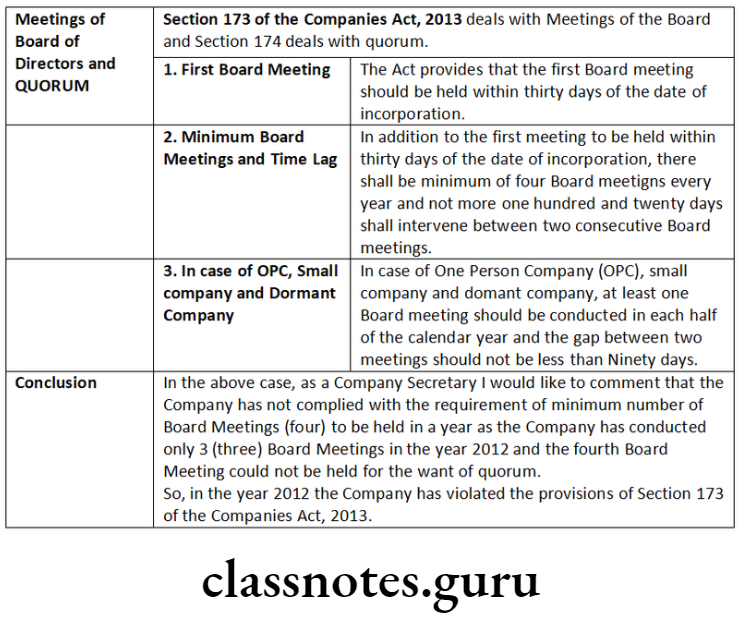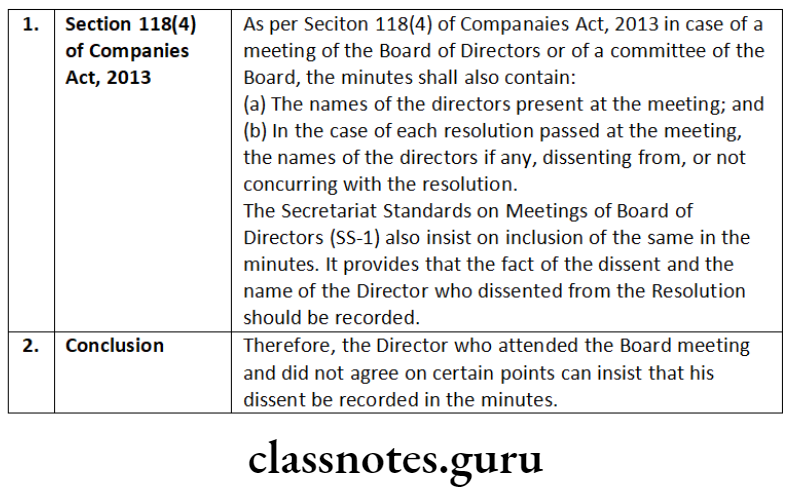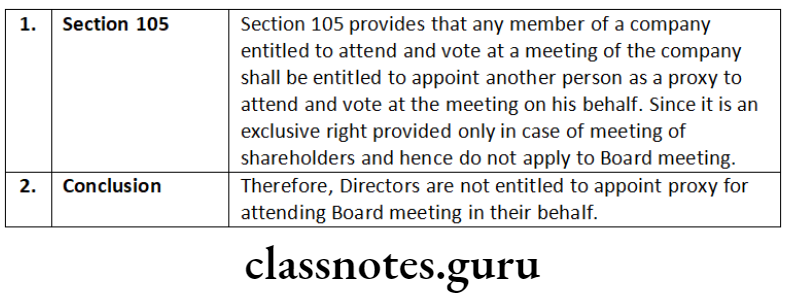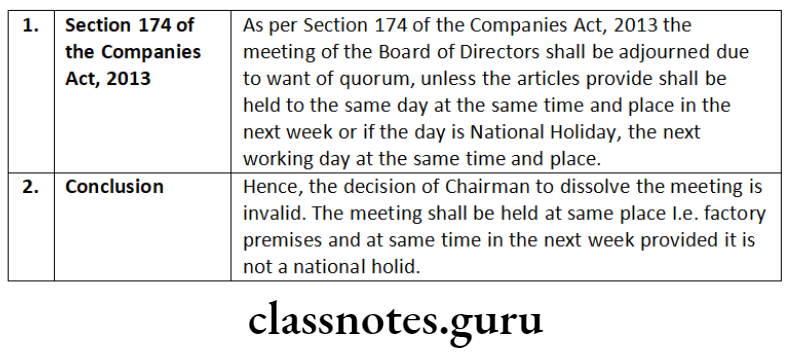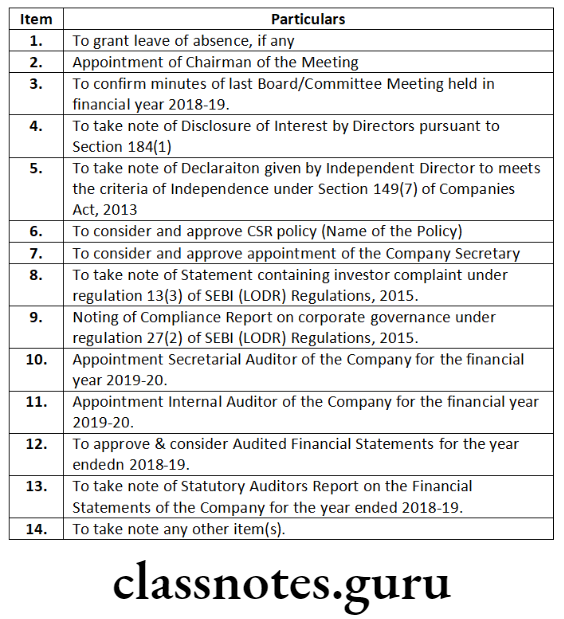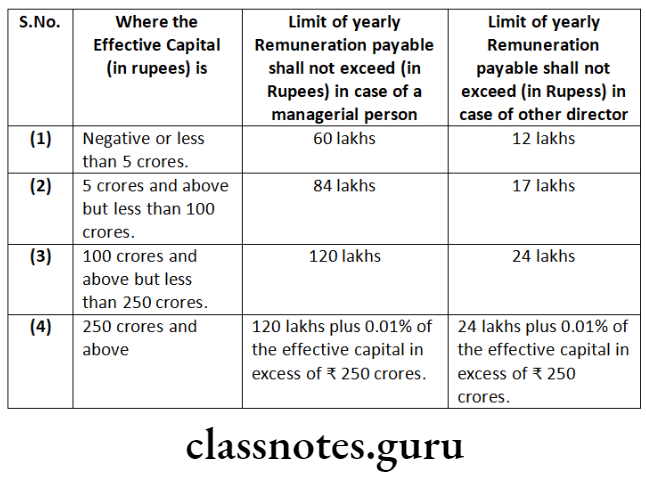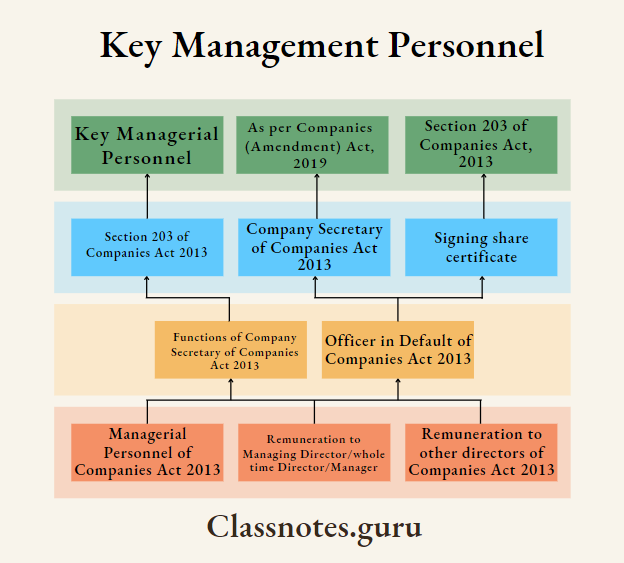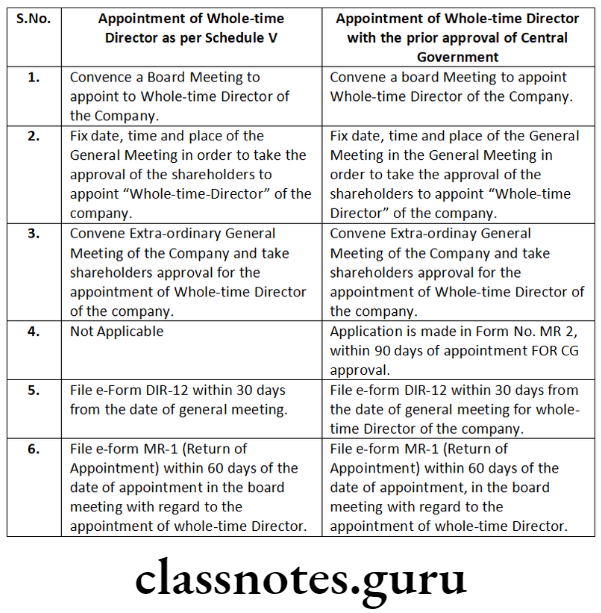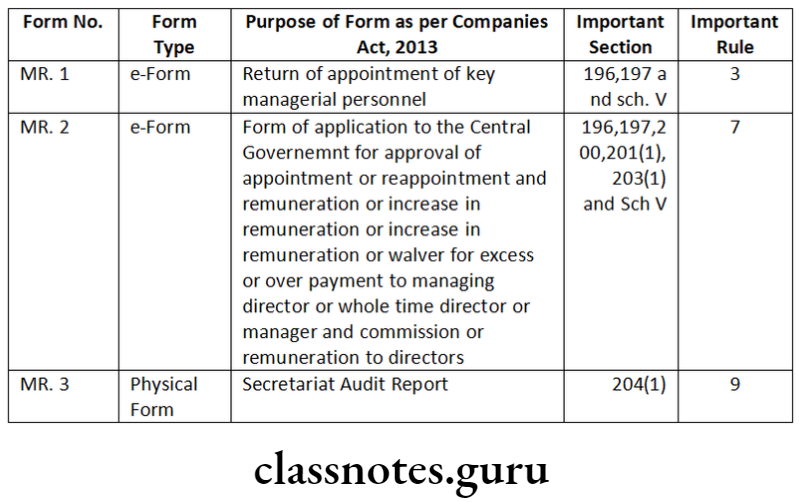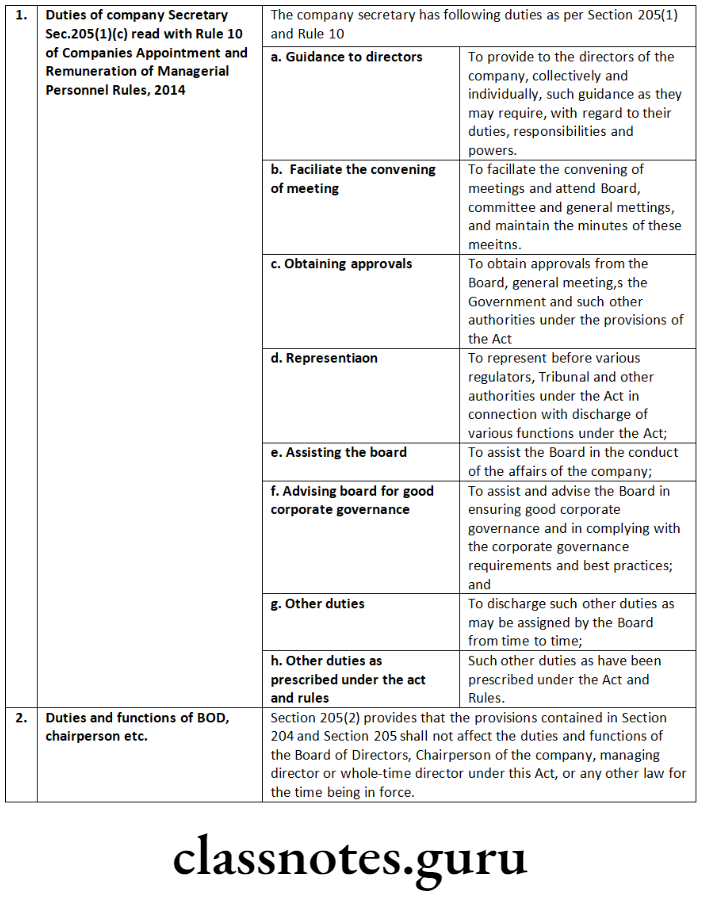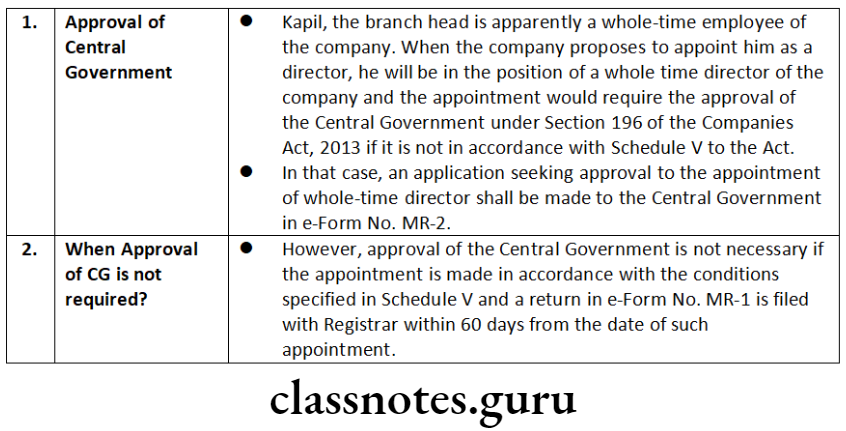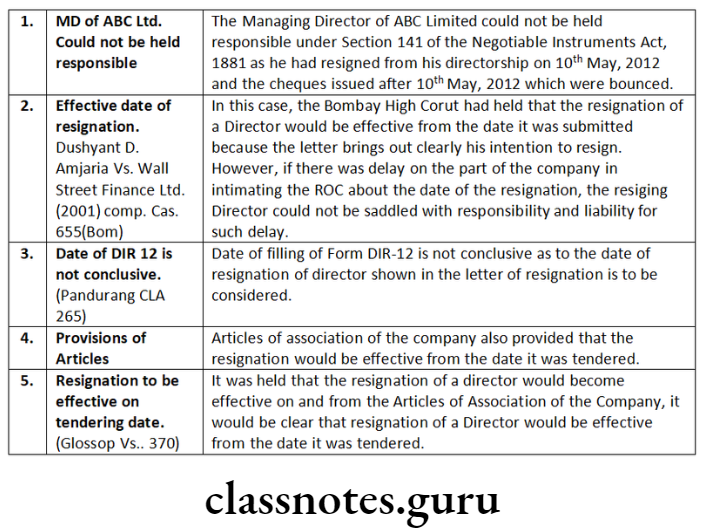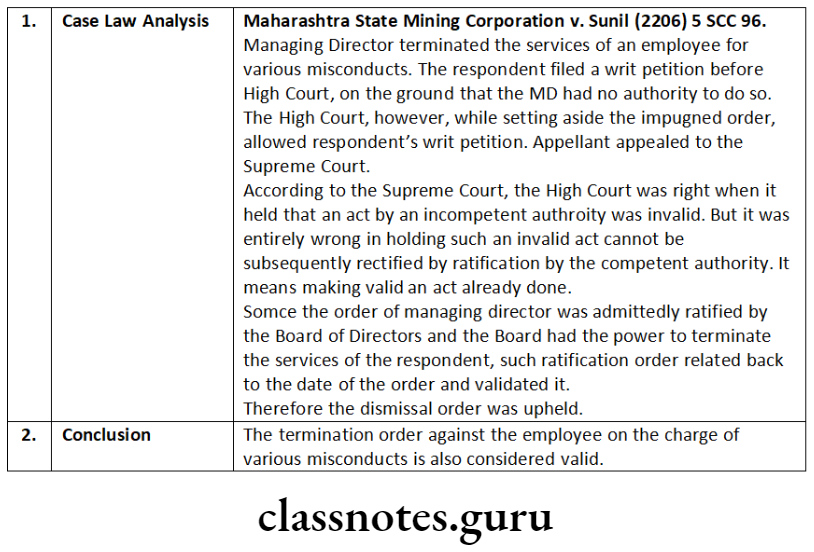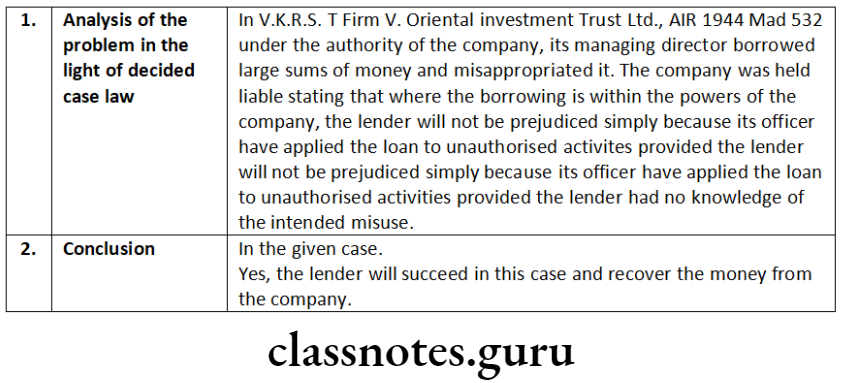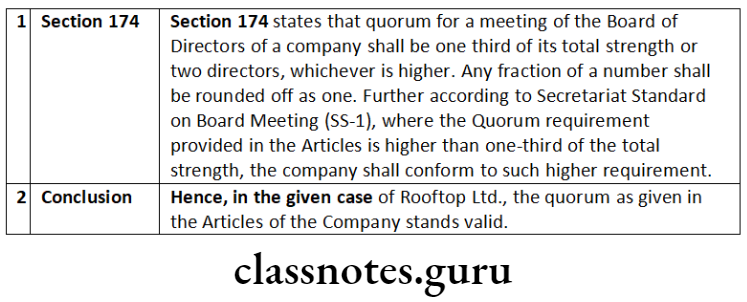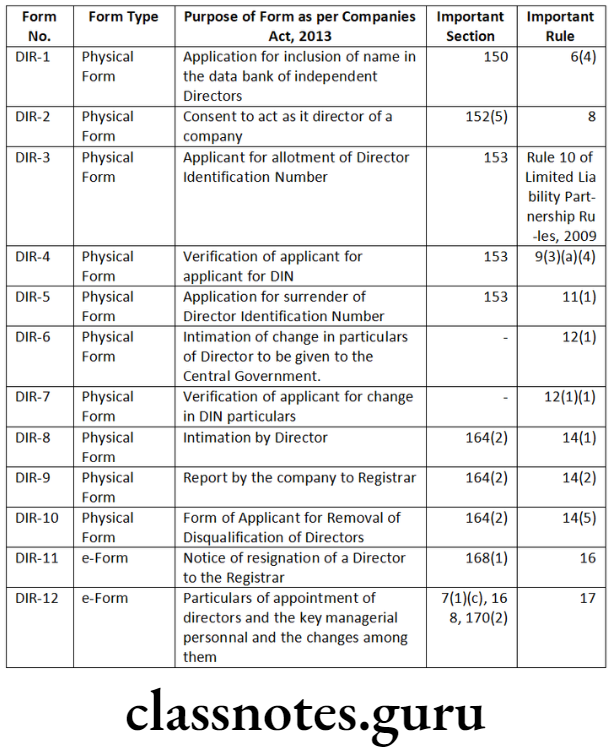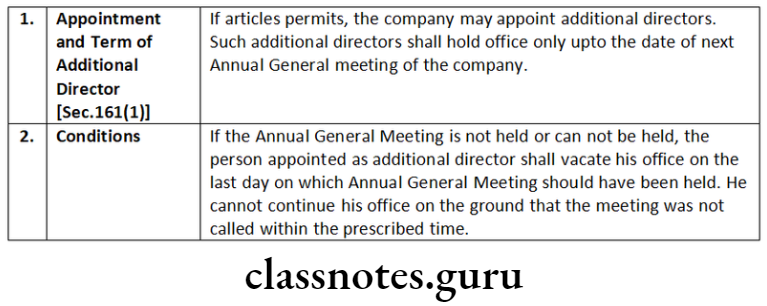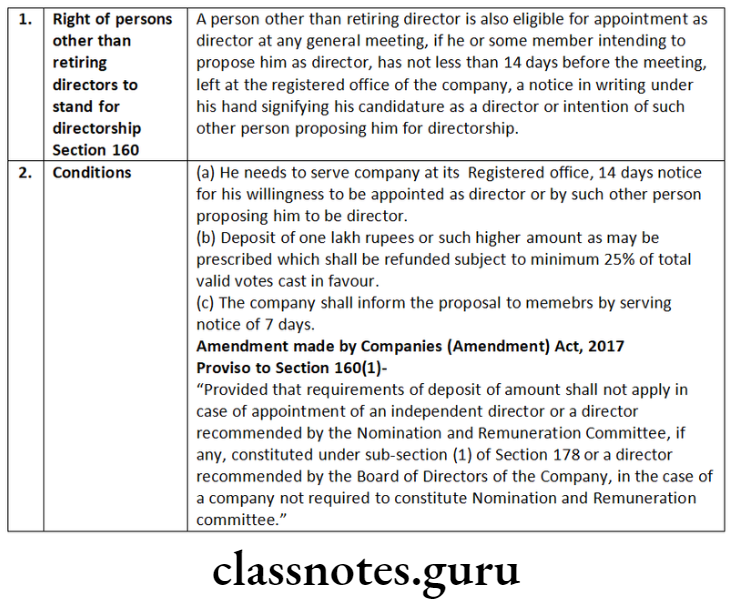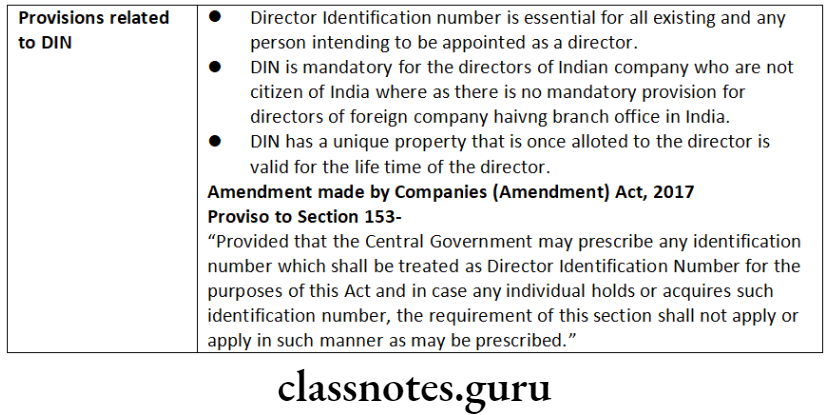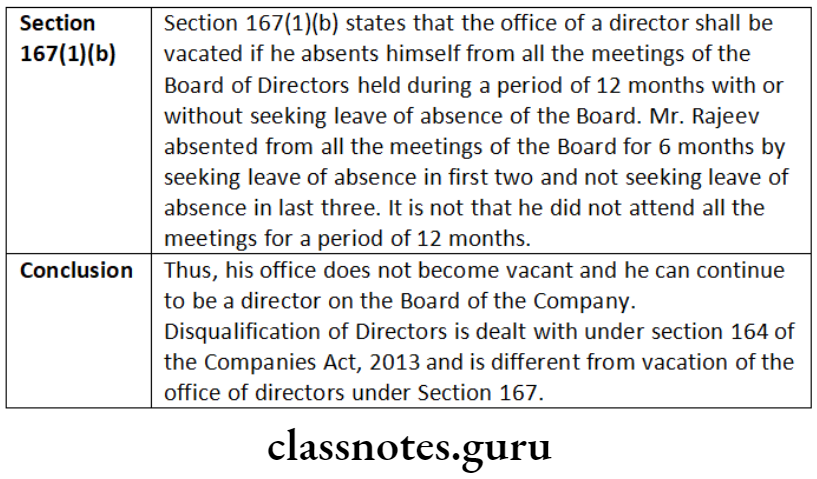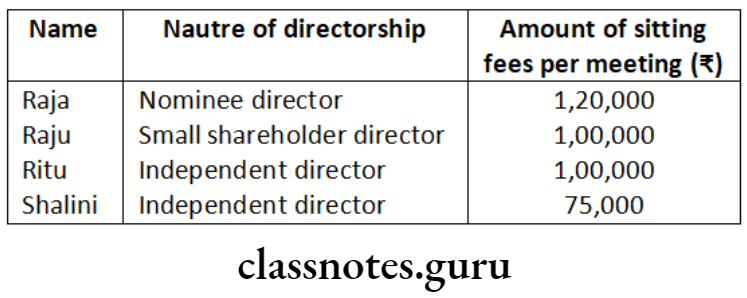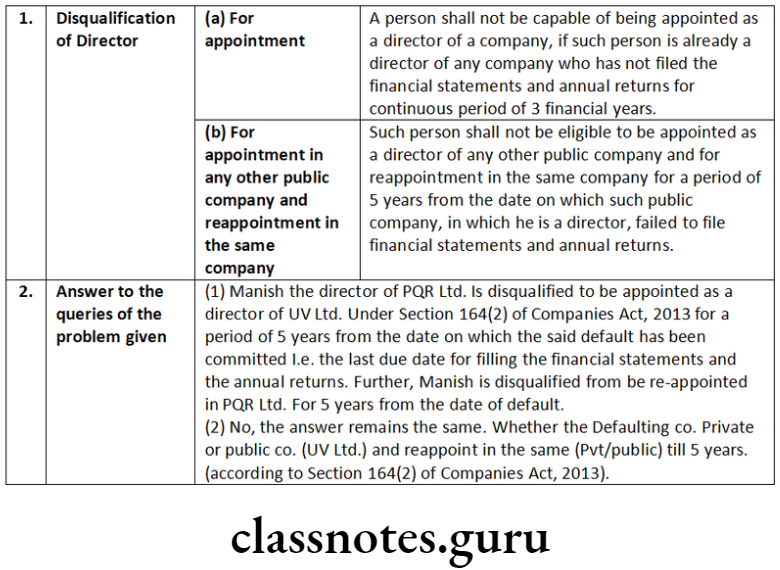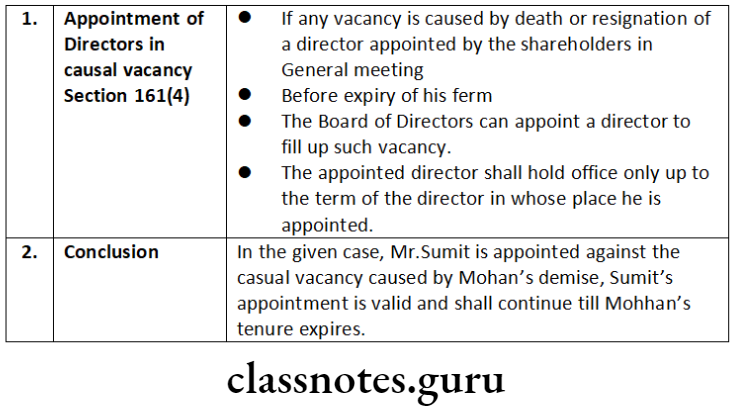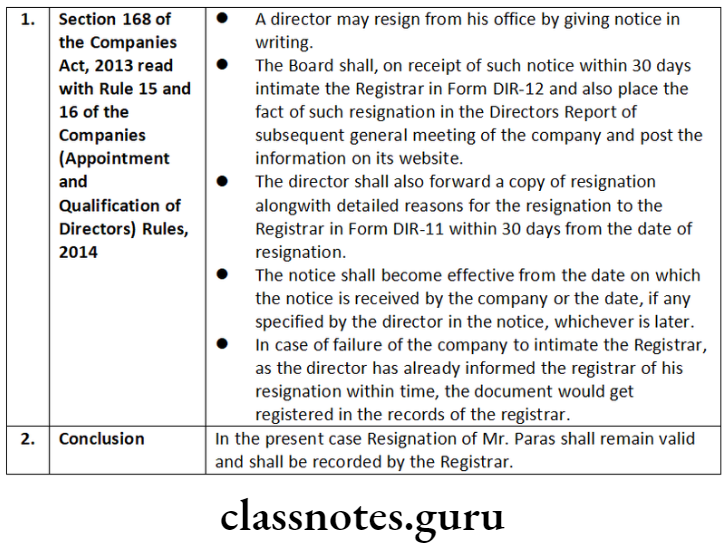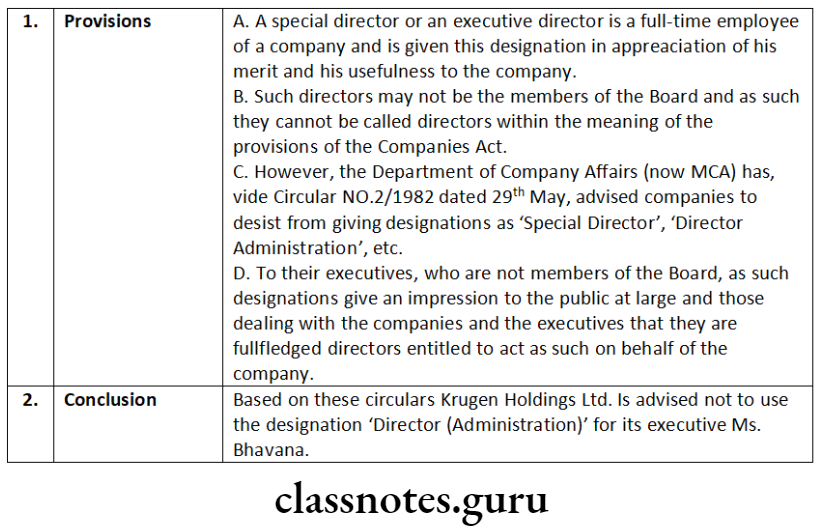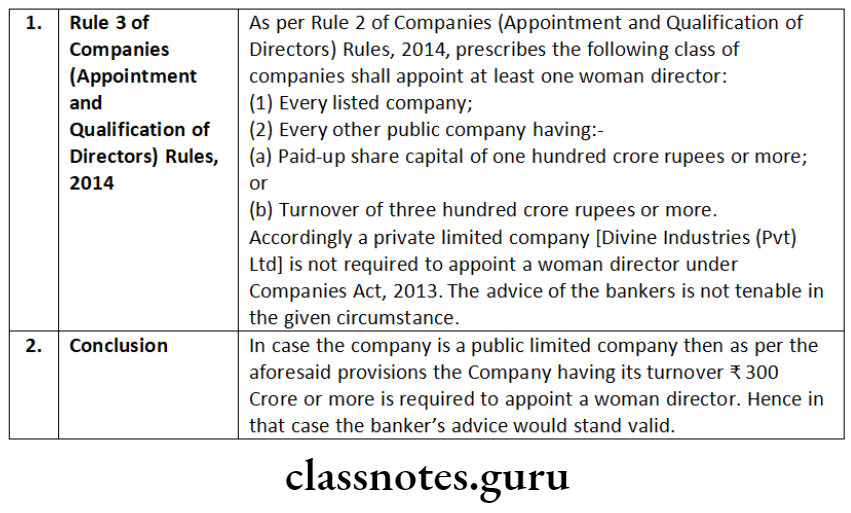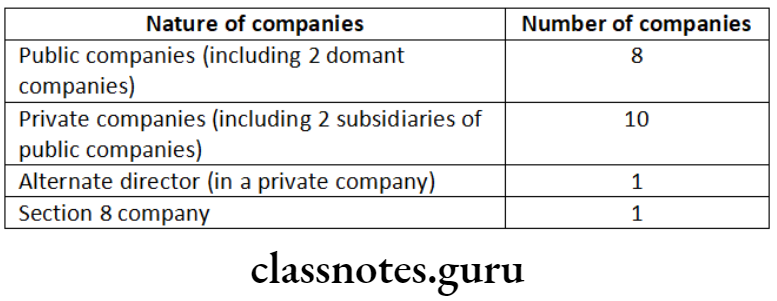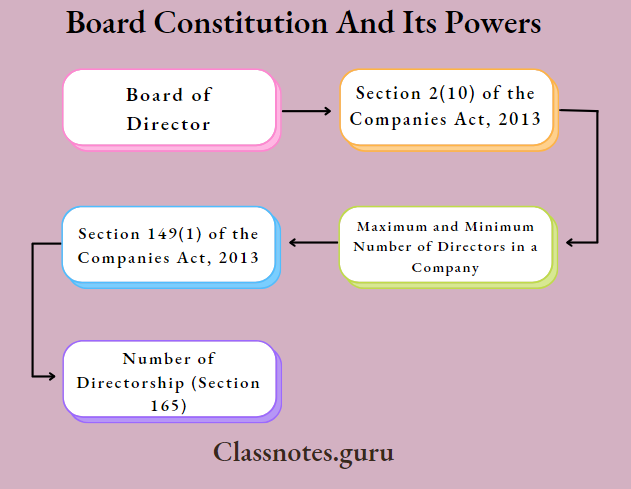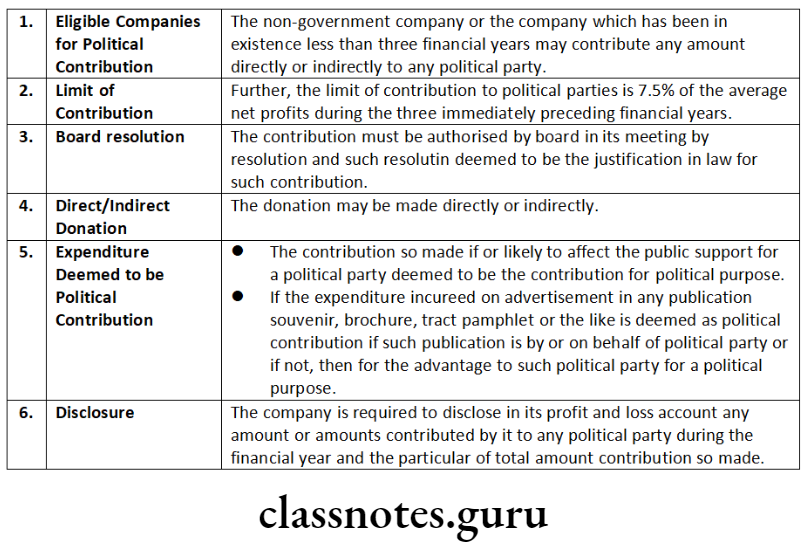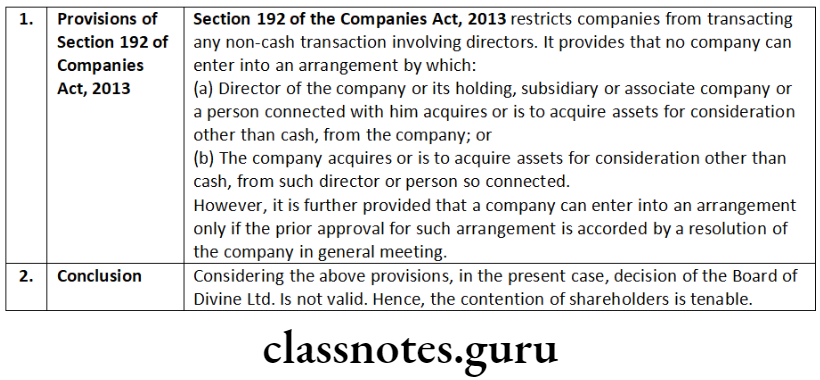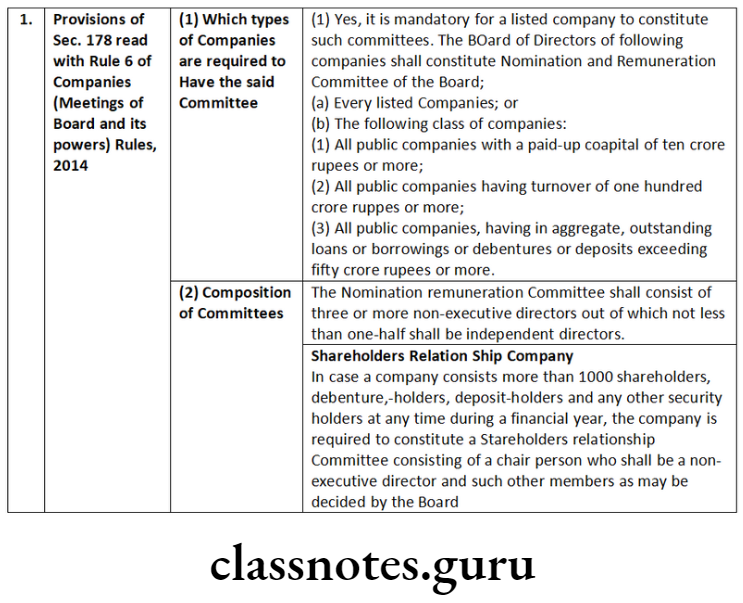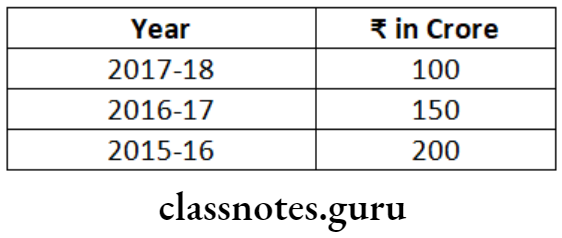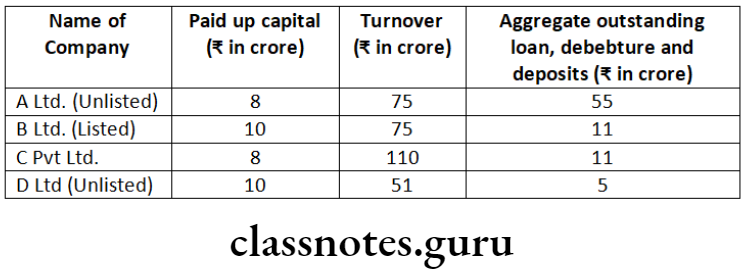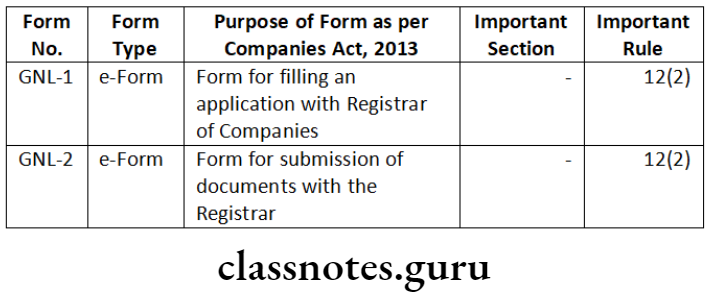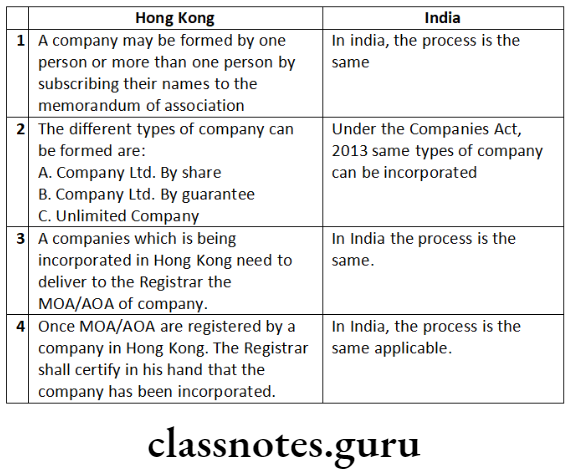CBSE For Class 6 Hindi Chapter 4 हार की जीत – सुदर्शन
1. पाठ का सार
श्री सुदर्शन द्वारा लिखित कहानी ‘हार की जीत’ में एक डाकू के हृदय परिवर्तन की घटना का वर्णन किया गया है। बाबा भारती के पास एक बहुत सुंदर घोड़ा था। उसकी मशहूरी दूर-दूर तक फैल गई थी। बाबा भारती सब कुछ छोड़कर साधु बन गये थे, परंतु घोड़े को छोड़ना उनके वश में न था। वे उसे ‘सुलतान’ कह कर पुकारते थे। संध्या के समय वे सुलतान पर चढ़कर आठ-दस मील का चक्कर लगा लेते थे। उस इलाके के मशहूर डाकू खड्गसिंह के कानों में भी सुलतान की चर्चा पहुँची। वह उसे देखने के लिए बेचैन हो उठा और एक दिन दोपहर के समय बाबा भारती के पास पहुँचा। उन्हें नमस्कार करके बैठ गया। बाबा भारती ने उससे पूछा कि कहो खड्गसिंह क्या हाल है? इधर कैसे आना हुआ? खड्गसिंह ने कहा, कि आपकी कृपा है।
सुलतान को देखने की चाह मुझे यहाँ खींच लाई। इस पर बाबा भारती ने उत्तर दिया कि सचमुच घोड़ा बाँका है। उन्होंने खड्गसिंह को अस्तबल में ले जाकर घोड़ा दिखाया। खड्गसिंह उस पर लट्टू हो गया। वह मन ही मन सोचने लगा कि ऐसा घोड़ा तो उसके पास होना चाहिए था। वहाँ से जाते-जाते वह बोला कि बाबा जी! मैं यह घोड़ा आपके पास न रहने दूँगा। यह सुनकर बाबा भारती को डर के मारे अब नींद न आती। वे सारी रात अस्तबल में घोड़े की रखवाली में बिताते।
एक दिन संध्या के समय बाबा भारती घोड़े पर सवार होकर घूमने जा रहे थे। अचानक उन्हें एक आवाज़ सुनाई दी- ” ओ बाबा ! इस कंगले की बात सुनते जाना।” उन्होंने देखा एक अपाहिज वृक्ष के नीचे बैठा कराह रहा है। बाबा भारती ने पूछा, तुम्हें क्या तकलीफ है? वह बोला, मैं दुखी हूँ। मुझे पास के रामावाला गाँव जाना है। मैं दुर्गादत्त वैद्य का सौतेला भाई हूँ। मुझे घोड़े पर चढ़ा लो।
बाबा भारती ने उस अपाहिज को घोड़े पर चढ़ा लिया और स्वयं लगाम पकड़कर चलने लगा। अचानक लगाम को झटका लगा और लगाम उनके हाथ से छूट गई। अपाहिज घोड़े पर तनकर बैठ गया। अपाहिज के वेश में वह खड्गसिंह था। बाबा भारती के मुँह से चीख निकल गई। बाबा भारती थोड़ी देर चुप रहने के बाद चिल्लाकर बोले, “खड्गसिंह मेरी बात सुनते जाओ।” वह कहने लगा, “बाबा जी अब घोड़ा न दूँगा।”
CBSE Class 6 Hindi Chapter 4 हार की जीत – सुदर्शन
बाबा भारती बोले- “ घोड़े की बात छोड़ो । अब मैं घोड़े के बारे में कुछ न कहूँगा। मेरी एक प्रार्थना है कि इस घटना के बारे में किसी से कुछ न कहना, क्योंकि लोगों को यदि इस घटना का पता चल गया तो वे किसी दीन-हीन गरीब पर विश्वास न करेंगे।” बाबा भारती सुलतान की ओर से मुँह मोड़कर ऐसे चले गए मानो उसके साथ उनका कोई संबंध न था।
बाबा जी के उक्त शब्द खड्गसिंह के कानों में गूँजते रहे। एक रात खड्गसिंह घोड़ा लेकर बाबा भारती के मंदिर में पहुँचा, चारों ओर खामोशी थी। अस्तबल का फाटक खुला था। उसने सुलतान को वहाँ बाँध दिया और फाटक बंद करके चल दिया। उसकी आँखों से पश्चाताप के आँसू बह रहे थे। रात के आखिरी पहर में बाबा भारती स्नान आदि के बाद अचानक ही अस्तबल की ओर चल दिए पर फाटक पर पहुँचकर उन्हें वहाँ सुलतान के न होने की बात याद आई तो उनके पैर स्वयं रुक गए। तभी उन्हें अस्तबल से सुल्तान के हिनहिनाने की आवाज़ सुनाई दी। वे प्रसन्नता से दौड़ते हुए अंदर आए और सुलतान से ऐसे लिपट गए जैसे कोई पिता अपने बिछुड़े हुए पुत्र से मिल रहा हो और बोले कि अब कोई गरीबों की सहायता से मुँह नहीं मोड़ेगा ।
2. शब्दार्थ और टिप्पणी
अर्पण-भेंट करना । घृणा-नफरत ।
कीर्ति – यश । छवि – शक्ल, सुंदरता। अभिलाषा – इच्छा । बाँका – सुंदर, स्वस्थ्य |
अस्तबल – घोड़े बाँधने का स्थान मिथ्या- झूठ ।
करुणा-दया। अपाहिज- विकलांग ।
प्रकट- उपस्थित बताना। प्रयोजन- उद्देश्य ।
बाग- लगाम । स्वप्न- सपना। स्वामी- मालिक।
3. अर्थग्रहण संबंधी एवं बहुवैकल्पिक प्रश्नोत्तर
दिए गए गद्यांशों को पढ़िए और प्रश्नों के उत्तर दीजिए-
[1] माँ को अपने बेटे और किसान को अपने लहलहाते खेत देखकर जो आनंद आता है, वही आनंद बाबा भारती को अपना घोड़ा देखकर आता था। भगवत भजन से जो समय बचता, वह घोड़े को अर्पण हो जाता। वह घोड़ा बड़ा सुंदर था, बड़ा बलवान उसके जोड़ का घोड़ा सारे इलाके में न था। बाबा भारती उसे सुलतान कह कर पुकारते, अपने हाथ से खरहरा करते, खुद दाना खिलाते और देख-देखकर प्रसन्न होते थे। उन्होंने रुपया, माल, असबाब, ज़मीन आदि अपना सब कुछ छोड़ दिया था, यहाँ तक कि उन्हें नगर के जीवन से भी घृणा थी। अब गाँव से बाहर एक छोटे-से मंदिर में रहते और भगवान का भजन करते थे। “मैं सुलतान के बिना नहीं रह सकूँगा”, उन्हें ऐसी भ्रांति – सी हो गई थी। वे उसकी चाल पर लट्टू थे। कहते, “ऐसे चलता है जैसे मोर घटा को देखकर नाच रहा हो।” जब तक संध्या समय सुलतान पर चढ़कर आठ-दस मील का चक्कर न लगा लेते, उन्हें चैन न आता। (पृष्ठ 33)
प्रश्न-
(क) बाबा भारती को अपना घोड़ा देखकर किस प्रकार का आनंद आता था?
(ख) बाबा भारती का भगवत भजन से जो समय बचता था, उसका वह क्या करता था ?
(ग) घोड़ा किस प्रकार का था?
Answer:
(क) माँ को अपने बेटे और किसान को अपने लहलहाते खेल देखकर जो आनंद आता है, वही आनंद बाबा भारती को अपना घोड़ा देखकर आता था।
(ख) भगवत भजन से जो समय बचता था, उसे वह अपने घोड़े को अर्पण कर देता था।
(ग) घोड़ा बड़ा सुंदर, बड़ा बलवान था। उसके जोड़ का घोड़ा सारे इलाके में न था ।
बहुवैकल्पिक प्रश्नोत्तर
Question 1. घोड़ा देखकर किसको बड़ा आनंद आता था ?
(क) बाबा भारती को
(ख) माँ को
(ग) किसान को
(घ) भगवान को
Answer: (क) बाबा भारती को
Question 2. घोड़े का नाम क्या था ?
(क) सलमान
(ख) सुलतान
(ग) मुलतान
(घ) चेतक
Answer: (ख) सुलतान
Question 3. बाबा भारती सुलतान कहकर किसे पुकारते थे?
(क) भेड़ को
(ख) शेर को
(ग) घोड़े को
(घ) बाघ को
Answer: (ग) घोड़े को
Class 6 Hindi Chapter 4 हार की जीत NCERT Solutions
Question 4. नगर के जीवन से किसे घृणा थी?
(क) किसान को
(ख) घोड़े को
(ग) बाबा भारती को
(घ) माँ को
Answer: (ग) बाबा भारती को
Question 5. गाँव के बाहर एक छोटे से मंदिर में कौन रहता था?
(क) बाबा भारती
(ख) घोड़ा
(ग) किसान
(घ) भगवान
Answer: (क) बाबा भारती
[2] खड्गसिंह उस इलाके का प्रसिद्ध डाकू था। लोग उसका नाम सुनकर काँपते थे । होते-होते सुलतान की कीर्ति उसके कानों तक भी पहुँची। उसका हृदय उसे देखने के लिए अधीर हो उठा। एक दिन वह दोपहर के समय बाबा भारती के पास पहुँचा और नमस्कार करके बैठ गया। बाबा भारती ने पूछा, “खड्गसिंह, क्या हाल है?”
खड्गसिंह ने सिर झुकाकर उत्तर दिया, “आपकी दया है।
” कहो, इधर कैसे आ गए?”
“सुलतान की चाह खींच लाई । ”
“विचित्र जानवर है। देखोगे तो प्रसन्न हो जाओगे।”
“मैंने भी बड़ी प्रशंसा सुनी है। ‘
“उसकी चाल तुम्हारा मन मोह लेगी ! ”
“कहते हैं देखने में भी बहुत सुंदर है। ”
“क्या कहना! जो उसे एक बार देख लेता है, उसके हृदय पर उसकी छवि अंकित हो जाती है।” (पृष्ठ 34)
प्रश्न-
(क) इलाके का डाकू कौन था? उसका नाम सुनते ही लोगों पर क्या प्रभाव पड़ता था ?
(ख) किसकी कीर्ति खड्गसिंह के कानों तक पहुँची?
(ग) एक दिन खड्गसिंह दोपहर के समय किसके पास पहुँचा ?
Answer:
(क) इलाके का डाकू खड्गसिंह था। लोग दूसरे के मुख से सुनने के लिए उनका हृदय भी अधीर हो उसका नाम सुनकर काँपने लगते थे।
(ख) सुलतान की कीर्ति खड्गसिंह के कानों तक पहुँची।
(ग) एक दिन खड्गसिंह दोपहर के समय बाबा भारती के पास पहुँचा।
बहुवैकल्पिक प्रश्नोत्तर
Question 1. खड्गसिंह कौन था?
(क) डाकू
(ख) चोर
(ग) सज्जन व्यक्ति
(घ) महात्मा
Answer: (क) डाकू
Question 2. किसका नाम सुनकर लोग काँपते थे?
(क) बाबा भारती का
(ख) खड्गसिंह का
(ग) घोड़े का
(घ) इलाके का
Answer: (ख) खड्गसिंह का
Question 3. बाबा भारती के पास कौन पहुँचा ?
(क) घोड़ा
(ख) ग्रामीण
(ग) खड्गसिंह
(घ) कोई नहीं
Answer: (ग) खड्गसिंह
Question 4. किसकी छवि हृदय पर अंकित हो जाती है?
(क) घोड़े की
(ख) डाकू की
(ग) बाबा भारती की
(घ) इनमें से कोई नहीं।
Answer: (क) घोड़े की
Question 5. विचित्र जानवर कौन है?
(क) शेर
(ख) घोड़ा
(ग) हिरण
(घ) भालू
Answer: (ख) घोड़ा
[3] “बहुत दिनों से अभिलाषा थी, आज उपस्थित हो सका हूँ।”
बाबा भारती और खड्गसिंह दोनों अस्तबल में पहुँचे। बाबा ने घोड़ा दिखाया घमंड से, खड्गसिंह ने घोड़ा देखा आश्चर्य से । उसने सैकड़ों घोड़े देखे थे, परंतु ऐसा बाँका घोड़ा उसकी आँखों से कभी न गुजरा था। सोचने लगा, ‘भाग्य की बात है। ऐसा घोड़ा खड्गसिंह के पास होना चाहिए था। इस साधु को ऐसी चीज़ों से क्या लाभ?’ कुछ देर तक आश्चर्य से चुपचाप खड़ा रहा। इसके पश्चात उसके हृदय में हलचल होने लगी। बालकों की-सी अधीरता से बोला, “परंतु बाबाजी, इसकी चाल न देखी तो क्या ?”
बाबा भारती भी मनुष्य ही थे। अपनी चीज़ की प्रशंसा गया। घोड़े को खोलकर बाहर लाए और उसकी पीठ पर हाथ फेरने लगे। एकाएक उचककर सवार हो गए, घोड़ा हवा से बातें करने लगा। उसकी चाल को देखकर खड्गसिंह के हृदय पर साँप लोट गया। वह डाकू था और जो वस्तु उसे पसंद आ जाए उस पर वह अपना अधिकार समझता था। उसके पास बाहुबल था, आदमी थे और बेरहमी थी। जाते-जाते उसने कहा, “बाबाजी, मैं यह घोड़ा आपके पास न रहने दूँगा।” (पृष्ठ 34-35)
प्रश्न-
(क) बाबा भारती और खड्गसिंह दोनों कहाँ पहुँचें? यहाँ जाकर खड्गसिंह ने आश्चर्य से क्या देखा?
(ख) घोड़ा देखकर खड्गसिंह क्या सोचने लगा ?
(ग) बाबा भारती का हृदय अधीर क्यों हो गया?
Answer:
(क) बाबा भारती और खड्गसिंह दोनों अस्तबल में पहुँचे। वहाँ जाकर खड्गसिंह ने आश्चर्य से घोड़े को देखा।
(ख) घोड़ा देखकर खड्गसिंह सोचने लगा कि भाग्य की बात है। ऐसा घोड़ा खड्गसिंह के पास होना चाहिए था। इस साधु को ऐसी चीज़ों से क्या लाभ?
(ग) अपनी चीज़ की प्रशंसा दूसरे के मुख से सुनने के लिए बाबा भारती का हृदय अधीर हो गया।
बहुवैकल्पिक प्रश्नोत्तर
Question 1. अस्तबल में कौन पहुँचे? ‘
(क) बाबा भारती
(ख) खड्गसिंह
(ग) घोड़े
(घ) (क) और (ख) दोनों
Answer: (घ) (क) और (ख) दोनों
हार की जीत सुदर्शन Chapter 4 Hindi Class 6 NCERT
Question 2. बाबा भारती ने घोड़ा किसे दिखाया?
(क) पथिक को
(ख) खड्गसिंह को
(ग) लेखक को
(घ) उपर्युक्त में से कोई नहीं
Answer: (ख) खड्गसिंह को
Question 3. घोड़े को खोलकर बाहर कौन लाया?
(क) खड्गसिंह
(ख) बाबा भारती
(ग) लेखक
(घ) घोड़ा स्वयं बाहर आ गया।
Answer: (ख) बाबा भारती
Question 4. घोड़े की चाल को देखकर किसके हृदय पर साँप लोट गया ?
(क) पथिक के
(ख) सेवक के
(ग) बाबा भारती के
(घ) खड्गसिंह के
Answer: (घ) खड्गसिंह के
Question 5. खड्गसिंह कौन था?
(क) डाकू
(ख) व्यापारी
(ग) प्रधान
(घ) साधु
Answer: (क) डाकू
[4] बाबा भारती डर गए। अब उन्हें रात को नींद न आती। सारी रात अस्तबल की रखवाली में कटने लगी। प्रतिक्षण खड्गसिंह का भय लगा रहता, परंतु कई मास बीत गए और वह न आया। यहाँ तक कि बाबा भारती कुछ असावधान हो गए और इस भय को स्वप्न के भय की नाईं मिथ्या समझने लगे।
संध्या का समय था। बाबा भारती सुलतान की पीठ पर सवार होकर घूमने जा रहे थे। इस समय उनकी आँखों में चमक थी, मुख पर प्रसन्नता । कभी घोड़े के शरीर को देखते, कभी उसके रंग को और मन में फूले न समाते थे।
सहसा एक ओर से आवाज़ आई, ” ओ बाबा, इस कंगले की सुनते जाना। ”
प्रश्न-
(क) कौन डर गए? सारी रात वे क्या करने लगे?
(ख) प्रतिक्षण बाबा भारती को किसका भय लगा रहता था? कई मास बीतने के बाद भी कौन नहीं आया?
(ग) संध्या के समय बाबा भारती कहाँ जा रहे थे?
Answer:
(क) बाबा भारती डर गए। उन्हें रात को नींद न आती थी। सारी रात वे अस्तबल की रखवाली करने लगे।
(ख) प्रतिक्षण बाबा भारती को खड्गसिंह का भय लगा रहता था, परंतु कई मास बीतने के बाद भी वह नहीं आया।
(ग) संध्या के समय बाबा भारती सुलतान की पीठ पर सवार होकर घूमने जा रहे थे।
बहुवैकल्पिक प्रश्नोत्तर
Question 1. रात को नींद किसे नहीं आ रही थी ?
(क) खड्गसिंह को
(ख) बाबा भारती को
(ग) लेखक को
(घ) घोड़े को
Answer: (ख) बाबा भारती को
CBSE Hindi Class 6 Chapter 4 हार की जीत
Question 2. अस्तबल की रखवाली कौन करने लगा ?
(क) बाबा भारती
(ख) खड्गसिंह
(ग) लेखक
(घ) नौकर
Answer: (क) बाबा भारती
Question 3. बाबा भारती किस समय घूमने जा रहे थे?
(क) सुबह में
(ख) संध्या के समय
(ग) दोपहर में
(घ) रात में
Answer: (ख) संध्या के समय
Question 4. किनकी आँखों में चमक थी?
(क) खड्गसिंह की
(ख) घोड़े की
(घ) नौकर की
(ग) बाबा भारती की
Answer: (ग) बाबा भारती की
Question 5. सहसा एक ओर से आवाज़ आई, ” ओ बाबा, इस ———- की सुनते जाना।’
(क) कंगले
(ख) दुखिया
(ग) सिपाही
(घ) दास
Answer: (क) कंगले
[5] आवाज़ में करुणा थी। बाबा ने घोड़े को रोक लिया। देखा, एक अपाहिज वृक्ष की छाया में पड़ा कराह रहा है। बोले, “क्यों तुम्हें क्या कष्ट है?”
अपाहिज ने हाथ जोड़कर कहा, “बाबा, मैं दुखियारा हूँ। मुझ पर दया करो। रामावाला यहाँ से तीन मील है, मुझे वहाँ जाना है। घोड़े पर चढ़ा लो, परमात्मा भला करेगा।”
“वहाँ तुम्हारा कौन है?”
“दुर्गादत्त वैद्य का नाम आपने सुना होगा। मैं उनका सौतेला भाई हूँ।”
बाबा भारती ने घोड़े से उतरकर अपाहिज को घोड़े पर सवार किया और स्वयं उसकी लगाम पकड़कर धीरे-धीरे चलने लगे। सहसा उन्हें एक झटका सा लगा और लगाम हाथ से छूट गई। उनके आश्चर्य का ठिकाना न रहा, जब उन्होंने देखा कि अपाहिज घोड़े की पीठ पर तनकर बैठा है और घोड़े को दौड़ाए लिए जा रहा है। उनके मुख से भय, विस्मय और निराशा से मिली हुई चीख निकल गई। वह
अपाहिज डाकू खड्गसिंह था। बाबा भारती कुछ देर तक चुप रहे और कुछ समय पश्चात कुछ निश्चय करके पूरे बल से चिल्लाकर बोले, “जरा ठहर जाओ।” (पृष्ठ 36)
प्रश्न-
(क) घोड़ा रोकने के बाद बाबा भारती ने क्या देखा?
(ख) अपाहिज ने बाबा से क्या विनती की?
(ग) बाबा भारती ने घोड़े से उतरकर क्या किया?
Answer:
(क) घोड़ा रोकने के बाद बाबा भारती ने देखा कि एक अपाहिज वृक्ष की छाया में पड़ा कराह रहा है।
(ख) अपाहिज ने बाबा भारती से कहा कि बाबा, मैं दुखियारा हूँ। मुझ पर दया करो। रामावाला यहाँ से तीन मील दूर है, मुझे वहाँ जाना है। घोड़े पर चढ़ा लो, परमात्मा भला करेगा।
(ग) बाबा भारती ने घोड़े से उतरकर अपाहिज को घोड़े पर सवार किया और स्वयं उसकी लगाम पकड़कर धीरे-धीरे चलने लगे।
बहुवैकल्पिक प्रश्नोत्तर
Question 1. वैद्य का क्या नाम था ?
(क) दुर्गादत्त
(ख) सोमदत्त
(ग) गिरिधारी लाल
(घ) सुखेन
Answer: (क) दुर्गादत्त
Question 2. खड्गसिंह ने अपने आपको किसका सौतेला भाई बताया ?
(क) सोमदत्त का
(ख) दुर्गादत्त का
(ग) सुखेन का
(घ) गिरिधारी लाल का
Answer: (ख) दुर्गादत्त का
Question 3. अपाहिज कौन था?
(क) लेखक
(ख) डाकू खड्गसिंह
(ग) एक भिखारी
(घ) इनमें से कोई नहीं
Answer: (ख) डाकू खड्गसिंह
Question 4. अपाहिज ने कहाँ जाने के लिए बताया ?
(क) रामपुर
(ग) रामावाला
(ख) मिर्जापुर
(घ) बेलापुर
Answer: (ग) रामावाला
Question 5. किसके हाथ से लगाम छूट गई?
(क) बाबा भारती के
(ख) खड्गसिंह के
(ग) दुर्गादत्त के
(घ) अपाहिज के
Answer: (क) बाबा भारती के
[6] खड्गसिंह ने यह आवाज़ सुनकर घोड़ा रोक लिया और उसकी गरदन पर प्यार से हाथ फेरते हुए कहा, ” बाबाजी, यह घोड़ा अब न दूँगा।”
” परंतु एक बार सुनते जाओ।’
खड्गसिंह ठहर गया।
बाबा भारती ने निकट जाकर उसकी ओर ऐसी आँखों से देखा जैसे बकरा कसाई की ओर देखता है और कहा, “यह घोड़ा तुम्हारा हो चुका है। मैं तुमसे इसे वापस करने के लिए न कहूँगा। परंतु खड्गसिंह, केवल एक प्रार्थना करता हूँ, इसे अस्वीकार न करना; नहीं तो मेरा दिल टूट जाएगा।” ” बाबाजी, आज्ञा कीजिए। मैं आपका दास हूँ, केवल यह घोड़ा न दूँगा।”
‘अब घोड़े का नाम न लो। मैं तुमसे इस विषय में कुछ न कहूँगा। मेरी प्रार्थना केवल यह है कि इस घटना को किसी के सामने प्रकट न करना । ”
खड्गसिंह का मुँह आश्चर्य से खुला रह गया। उसे लगा था कि उसे घोड़े को लेकर यहाँ से भागना पड़ेगा, परंतु बाबा भारती ने स्वयं उसे कहा कि इस घटना को किसी के सामने प्रकट न करना। इससे क्या प्रयोजन सिद्ध हो सकता है ? खड्गसिंह ने बहुत सोचा, बहुत सिर मारा, परंतु कुछ समझ न सका। हारकर उसने अपनी आँखें बाबा भारती के मुख पर गड़ा दीं और पूछा, “बाबाजी, इसमें आपको क्या (पृष्ठ 36-37)
Class 6 Hindi Chapter 4 हार की जीत Notes
प्रश्न-
(क) बाबा भारती ने खड्गसिंह की ओर किस तरह देखा और क्या कहा ?
(ख) डाकू खड्गसिंह ने अपने आपको किसका दास बताया ?
(ग) खड्गसिंह का मुँह आश्चर्य से खुला क्यों रह गया?
Answer:
(क) बाबा भारती ने निकट जाकर खड्गसिंह की ओर ऐसी आँखों से देखा जैसे बकरा कसाई की ओर देखता है और कहा कि यह घोड़ा तुम्हारा हो चुका मैं तुमसे इसे वापस करने के लिए न कहूँगा । परंतु मेरी प्रार्थना केवल यह है कि इस घटना को किसी के सामने प्रकट न करना।
(ख) डाकू खड्गसिंह ने अपने आपको बाबा भारती का दास बताया।
(ग) जब बाबा भारती ने यह कहा कि इस घटना को किसी के सामने प्रकट न करना तो यह सुनते ही खड्गसिंह का मुँह आश्चर्य से खुला रह गया।
बहुवैकल्पिक प्रश्नोत्तर
Question 1. बाबा भारती ने किससे कहा कि इस घटना को किसी के सामने प्रकट न करना ?
(क) खड्गसिंह से
(ख) दुर्गादत्त से
(ग) नौकर से
(घ) स्वयं से
Answer: (क) खड्गसिंह से
Question 2. खड्गसिंह ने किसकी गरदन पर प्यार से हाथ फेरा?
(क) बाबा भारती की
(ख) घोड़े की
(ग) दुर्गादत्त की
(घ) नौकर की
Answer: (ख) घोड़े की
Question 3. किसका मुँह आश्चर्य से खुला रह गया ?
(क) बाबा भारती का
(ख) दुर्गादत्त का
(ग) खड्गसिंह का
(घ) इनमें से कोई नहीं
Answer: (ग) खड्गसिंह का
Question 4. खड्गसिंह ने अपनी आँखें किसके मुख पर गड़ा दीं?
(क) बाबा भारती के
(ख) सुलतान के
(ग) दुर्गादत्त के
(घ) नौकर के
Answer: (क) बाबा भारती के
Question 5. गद्यांश में ‘स्वीकार’ का विलोम शब्द क्या प्रयुक्त?
(क) संतुष्ट
(ख) अस्वीकार
(ग) ठग
(घ) डाकू
Answer: (ख) अस्वीकार
[7] सुनकर बाबा भारती ने उत्तर दिया, “लोगों को यदि इस घटना का पता चला तो वे किसी गरीब पर विश्वास न करेंगे। दुनिया से विश्वास उठ जाएगा।” यह कहते-कहते उन्होंने सुलतान की ओर से इस तरह मुँह मोड़ लिया जैसे उनका उससे कभी कोई संबंध ही न रहा हो ।
बाबा भारती चले गए। परंतु उनके शब्द खड्गसिंह के कानों में उसी प्रकार गूँज रहे थे। सोचता था, ‘कैसे ऊँचे विचार हैं, कैसा पवित्र भाव है ! उन्हें इस घोड़े से प्रेम था, इसे देखकर उनका मुख फूल की नाईं खिल जाता था। कहते थे, “इसके बिना मैं रह न सकूँगा।” इसकी रखवाली में वे कई रात सोए नहीं। भजन भक्ति न कर रखवाली करते रहे। परंतु आज उनके मुख पर दुख की रेखा तक दिखाई न पड़ती थी। उन्हें केवल यह खयाल था कि कहीं लोग गरीबों पर विश्वास करना न छोड़ दें।’ (पृष्ठ 37)
प्रश्न-
(क) बाबा भारती ने क्या उत्तर दिया ?
(ख) खड्गसिंह के कानों में क्या गूँज रहे थे?
(ग) बाबा भारती का क्या खयाल था ?
Answer:
(क) बाबा भारती ने उत्तर दिया कि लोगों को यदि इस घटना का पता चला तो वे किसी गरीब पर विश्वास न करेंगे। दुनिया से विश्वास उठ जाएगा।
(ख) खड्गसिंह के कानों में बाबा भारती के शब्द गूँज रहे थे।
(ग) बाबा भारती का खयाल था कि कहीं लोग गरीबों पर विश्वास करना न छोड़ दें।
बहुवैकल्पिक प्रश्नोत्तर
Question 1. सुलतान की ओर से मुँह किसने मोड़ लिया?
(क) बाबा भारती ने
(ख) खड्गसिंह ने
(ग) दुर्गादत्त ने
(घ) इनमें से कोई नहीं।
Answer: (क) बाबा भारती ने
Question 2. किसके कानों में बाबा भारती के शब्द गूँज रहे थे?
(क) सुलतान के
(ख) दुर्गादत्त के
(ग) खड्गसिंह के
(घ) इनमें से कोई नहीं ।
Answer: (ग) खड्गसिंह के
Question 3. घोड़े से किन्हें प्रेम था ?
(क) दुर्गादत्त को
(ख) सुलतान को
(ग) खड्गसिंह को
(घ) बाबा भारती को
Answer: (घ) बाबा भारती को
Question 4. ‘उनका मुख फूल की नाई खिल जाता था’ – यहाँ ‘नाई’ का क्या अर्थ है?
(क) समान
(ख) दाढ़ी – बाल बनाने वाला
(ग) नई
(घ) नहीं
Answer: (क) समान
Question 5. किसके मुख पर दुख की रेखा तक दिखाई न पड़ती थी?
(क) खड्गसिंह के
(ख) बाबा भारती के
(ग) सुलतान के
(घ) दुर्गादत्त के
Answer: (ख) बाबा भारती के
Chapter 4 हार की जीत सुदर्शन Hindi Class 6 Solutions
[8] रात के अँधेरे में खड्गसिंह बाबा भारती के मंदिर में पहुँचा। चारों ओर सन्नाटा था। आकाश में तारे टिमटिमा रहे थे। थोड़ी दूर पर गाँवों के कुत्ते भौंक रहे थे। मंदिर के अंदर कोई शब्द सुनाई न देता था। खड्गसिंह सुलतान की बाग पकड़े हुए था। वह धीरे-धीरे अस्तबल के फाटक पर पहुँचा। फाटक खुला पड़ा था। किसी समय वहाँ बाबा
भारती स्वयं लाठी लेकर पहरा देते थे, परंतु आज उन्हें किसी चोरी, किसी डाके का भय न था। खड्गसिंह ने आगे बढ़कर सुलतान को उसके स्थान पर बाँध दिया और बाहर निकलकर सावधानी से फाटक बंद कर दिया। इस समय उसकी आँखों में पश्चाताप के आँसू थे।
रात्रि का तीसरा पहर बीत चुका था। चौथा पहर आरंभ होते ही बाबा भारती ने अपनी कुटिया से बाहर निकल ठंडे जल से स्नान किया। उसके पश्चात इस प्रकार जैसे कोई स्वप्न में चल रहा हो, उनके पाँव अस्तबल की ओर बढ़े। परंतु फाटक पर पहुँचकर उनको अपनी भूल प्रतीत हुई। साथ ही घोर निराशा ने पाँव को मन-मन-भर का भारी बना दिया। वे वहीं रुक गए। (पृष्ठ 38)
प्रश्न-
(क) रात के अँधेरे में खड्गसिंह कहाँ पहुँचा ? वहाँ भूमि की मिट्टी पर परस्पर मेल हो गया। चारों ओर कैसा वातावरण था?
(ख) खड्गसिंह किसका बाग पकड़े हुए था? (ग) बाबा भारती ने अपनी कुटिया से निकलकर क्या किया?
Answer:
(क) रात के अँधेरे में खड्गसिंह बाबा भारती के मंदिर में पहुँचा। वहाँ चारों ओर सन्नाटा था।
(ख) खड्गसिंह सुलतान की बाग पकड़े हुए था।
(ग) बाबा भारती ने अपनी कुटिया से निकलकर ठंडे जल से स्नान किया।
बहुवैकल्पिक प्रश्नोत्तर
Question 1. आकाश में क्या टिमटिमा रहे थे?
(क) सूर्य
(ख) चंद्रमा
(ग) तारे
(घ) जुगनू
Answer: (ग) तारे
Question 2. सुलतान की बाग कौन पकड़े हुए था?
(क) खड्गसिंह
(ख) बाबा भारती
(ग) दुर्गादत्त
(घ) कोई नहीं
Answer: (क) खड्गसिंह
Question 3. अस्तबल के फाटक पर कौन पहुँचा ?
(क) बाबा भारती
(ख) खड्गसिंह
(ग) दुर्गादत्त
(घ) पथिक
Answer: (ख) खड्गसिंह
Question 4. खड्गसिंह ने सुलतान को कहाँ बाँध दिया?
(क) उसके स्थान पर
(ख) घर से बाहर
(ग) मंदिर में
(घ) सड़क पर
Answer: (क) उसके स्थान पर
Question 5. किसकी आँखों में पश्चाताप के आँसू थे?
(क) खड्गसिंह की
(ख) बाबा भारती की
(ग) सुलतान की
(घ) दुर्गादत की
Answer: (क) खड्गसिंह की
NCERT Solutions Class 6 Hindi Chapter 4 हार की जीत
[9] घोड़े ने अपने स्वामी के पाँवों की चाप को पहचान लिया और ज़ोर से हिनहिनाया। अब बाबा भारती आश्चर्य और प्रसन्नता से दौड़ते हुए अंदर घुसे और अपने घोड़े के गले से लिपटकर इस प्रकार रोने लगे मानो कोई पिता बहुत दिन से बिछड़े पुत्र से मिल रहा हो। बार-बार उसकी पीठ पर हाथ फेरते, बार-बार उसके मुँह पर थपकियाँ देते। और कहते थे, “अब कोई गरीबों की सहायता से मुँह न मोड़ेगा।”
थोड़ी देर के बाद जब वह अस्तबल से बाहर निकले तो उनकी आँखों से आँसू बह रहे थे। ये आँसू उसी भूमि पर ठीक उसी जगह गिर रहे थे, जहाँ बाहर निकलने के बाद खड्गसिंह खड़ा होकर रोया था। दोनों के आँसुओं का उस
प्रश्न-
(क) घोड़े ने किसके पाँवों की चाप को पहचान लिया ?
(ख) घोड़े को देखकर बाबा भारती की क्या प्रतिक्रिया हुई?
(ग) किनके आँसुओं का भूमि की मिट्टी पर परस्पर मेल हो गया ?
Answer:
(क) घोड़े ने स्वामी के पाँवों की चाप को पहचान लिया।
(ख) बाबा भारती आश्चर्य और प्रसन्नता से दौड़ते हुए अंदर घुसे और अपने घोड़े के गले से लिपटकर इस प्रकार रोने लगे मानो कोई पिता बहुत दिन से बिछड़े पुत्र से मिल रहा हो।
(ग) बाबा भारती और खड्गसिंह के आँसुओं का भूमि की मिट्टी पर परस्पर मेल हो गया।
बहुवैकल्पिक प्रश्नोत्तर
Question 1. अपने स्वामी के पाँवों की चाप को किसने पहचान लिया?
(क) घोड़े ने
(ख) खड्गसिंह ने
(ग) नौकर ने
(घ) दुर्गादत्त ने
Answer: (क) घोड़े ने
Question 2. अपने घोड़े के गले से लिपटकर कौन रो रहे थे?
(क) खगसिंह
(ख) बाबा भारती
(ग) सुलतान
(घ) दुर्गादत्त
Answer: (ख) बाबा भारती
Question 3. किनकी आँखों से आँसू बह रहे थे?
(क) बाबा भारती की
(ख) खड्गसिंह की
(ग) सुलतान की
(घ) इनमें से कोई नहीं
Answer: (क) बाबा भारती की
Question 4. घोड़े की पीठ पर बार-बार हाथ कौन फेर रहे थे?
(क) खड्गसिंह
(ख) बाबा भारती
(ग) नौकर
(घ) सभी
Answer: (ख) बाबा भारती
Question 5. ‘हिनहिनाना’ किसकी आवाज़ है?
(क) गधे की
(ख) घोड़े की
(ग) कबूतर की
(घ) तोते की
Answer: (ख) घोड़े की
4. पाठ से प्रश्न-अभ्यास
प्रश्न (क) नीचे दिए गए प्रश्नों का सटीक उत्तर कौन-सा है? उसके सामने तारा (*) बनाइए-
- सुलतान के छीने जाने का बाबा भारती पर क्या प्रभाव हुआ?
- बाबा भारती के मन से चोरी का डर समाप्त हो गया।
- बाबा भारती ने गरीबों की सहायता करना बंद कर दिया।
- बाबा भारती ने द्वार बंद करना छोड़ दिया।
- बाबा भारती असावधान हो गए।
- “बाबा भारती भी मनुष्य ही थे।” इस कथन के समर्थन में लेखक ने कौन-सा तर्क दिया है?
- बाबा भारती ने डाकू को घमंड से घोड़ा दिखाया।
- बाबा भारती घोड़े की प्रशंसा दूसरों से सुनने के लिए व्याकुल थे।
- बाबा भारती को घोड़े से अत्यधिक लगाव और मोह था।
- बाबा भारती हर पल घोड़े की रखवाली करते रहते थे।
Answer:
- बाबा भारती असावधान हो गए।
- बाबा भारती ने डाकू को घमंड से घोड़ा दिखाया।
शीर्षक
(क) आपने अभी जो कहानी पढ़ी है, इसका नाम सुदर्शन ने ‘हार की जीत’ रखा है। अपने समूह में चर्चा करके लिखिए कि उन्होंने इस कहानी को यह नाम क्यों दिया होगा? अपने उत्तर का कारण भी लिखिए।
Answer: सबकी सहायता करने तथा समाज में भाईचारा व सौहार्द बने रहने के उद्देश्य से इस कहानी का नाम ‘हार की जीत’ रखा होगा |
(ख) यदि आपको इस कहानी को कोई अन्य नाम देना हो तो क्या नाम देंगे? आपने यह नाम क्यों सोचा, यह भी बताइए ।
Answer: डाकू का हृदय परिवर्तन ।
कारण- बाबा भारती ने कहा था कि इस घटना को किसी के सामने प्रकट न करना। लोगों को यदि इस घटना का पता चला तो वे किसी गरीब पर विश्वास न करेंगे। तभी खड्गसिंह का हृदय परिवर्तन हुआ और पुन: घोड़े को बाबा भारती को वापस दे दिया।
(ग) बाबा भारती ने डाकू खड्गसिंह से कौन-सा वचन लिया?
Answer: बाबा भारती ने डाकू खड्गसिंह से यह वचन लिया कि इस घटना को वह किसी के सामने प्रकट न करेगा।
पंक्तियों पर चर्चा
प्रश्न- कहानी में से चुनकर कुछ वाक्य नीचे दिए गए हैं। इन्हें ध्यान से पढ़िए और इन पर विचार कीजिए। आपको इनका क्या अर्थ समझ में आया ? अपने विचार लिखिए-
- ‘भगवत भजन से जो समय बचता, वह घोड़े को अर्पण हो जाता।’
- “बाबा ने घोड़ा दिखाया घमंड से, खड्गसिंह ने घोड़ा देखा आश्चर्य से । “
- “वह डाकू था और जो वस्तु उसे पसंद आ जाए उस पर अपना अधिकार समझता था । “
- “बाबा भारती ने निकट जाकर उसकी ओर ऐसी आँखों से देखा जैसे बकरा कसाई की ओर देखता है और कहा, यह घोड़ा तुम्हारा हो चुका है। “
- “उनके पाँव अस्तबल की ओर मुड़े। परंतु फाटक पर पहुँचकर उनको अपनी भूल प्रतीत हुई। “
Answer: विद्यार्थी स्वयं करें। सोच-विचार के लिए
(क) किस-किस के आँसुओं का मेल हो गया था?
Answer: बाबा भारती और खड्गसिंह के आँसुओं का मेल हो गया था।
(ख) दोनों के आँसुओं में क्या अंतर था ?
Answer: दोनों के आँसुओं में यह अंतर है कि बाबा भारती के आँसू खुशी के आँसू थे और खड्गसिंह के आँसू दुख के आँसू थे।
दिनचर्या
(क) कहानी पढ़कर आप बाबा भारती के जीवन के विषय में बहुत कुछ जान चुके हैं। अब आप कहानी के आधार पर बाबा भारती की दिनचर्या लिखिए। वे उठने से लेकर रात को सोने तक क्या-क्या करते सुबह होंगे, लिखिए। इस काम में आप थोड़ा-बहुत अपनी कल्पना का सहारा भी ले सकते हैं।
Answer: बाबा भारती सुबह-सुबह जग जाते होंगे। स्नान आदि करने के उपरांत मंदिर में जाकर भगवत भजन करते होंगे। उसके बाद वे अपने घोड़े की देखभाल करते होंगे। वे अपने हाथ से घोड़े को खरहरा करते और दाना खिलाते होंगे। रात के समय वे जागकर घोड़े की रखवाली करते होंगे। रात काफी बीतने पर वे सो जाते होंगे। पुनः सुबह जगकर अपनी दिनचर्या में लग जाते होंगे।
(ख) अब इनका प्रयोग करते हुए अपने मन से नए वाक्य बनाइए ।
Answer:
- लट्टू होना (कायल होना)-मेरा मित्र फिल्म कहानी से तो प्रभावित हुआ ही वह उस अभिनेत्री पर लट्टू हो गया।
- हृदय पर साँप लोटना ( ईर्ष्या करना) – साथी की सफलता से शेखर के हृदय पर साँप लेटने लगा।
- फूले न समाना (बहुत खुश होना ) – बहुत दिनों के बाद अपने अंतरग मित्र को देखते ही हरि फूला न समाया ।
- मुँह मोड़ लेना ( साथ छोड़ देना ) – श्याम को व्यापार में घाटा हुआ तो उसके सभी परिवारवालों ने मुँह
- मुख खिल जाना ( प्रसन्न होना) – बेटे का रिजल्ट देखकर पिताजी का मुख खिल गया।
- न्योछावर कर देना ( अर्पण करना) – सैनिक अपने प्राण भारतमाता पर न्योछावर कर देते हैं।
5. पाठ से आगे प्रश्न- अभ्यास
सुलतान की कहानी
मान लीजिए, यह कहानी सुलतान सुना रहा है। तब कहानी कैसे आगे बढ़ती ? स्वयं को सुलतान के स्थान पर रखकर कहानी बनाइए ।
(संकेत– आप कहानी को इस प्रकार बढ़ा सकते हैं-मेरा नाम सुलतान है। मैं एक घोड़ा हूँ……)
Answer: परीक्षोपयोगी नहीं।
मन के भाव
(क) कहानी में से चुनकर कुछ शब्द नीचे दिए गए हैं। बताइए, कहानी में कौन, कब, ऐसा अनुभव कर रहा था-
- चकित
- अधीर
- प्रसन्नता
- डर
- करुणा
- निराशा
Answer:
- चकित – खड्गसिंह ने जब घोड़े को देखा तो वह चकित रह गया।
- अधीर – बाबा भारती और खड्गसिंह के बीच संवाद के दौरान इसे बाबा भारती अनुभव कर रहे थे।
- डर – जब खड्गसिंह ने बाबा भारती से कहा कि घोड़ा आपके पास न रहने दूँगा, तब बाबा भारती इसे अनुभव कर रहे थे।
- प्रसन्नता – जब बाबा भारती सुलतान की पीठ पर सवार होकर घूमने जा रहे थे तो उस समय उनके मुख पर प्रसन्नता थी।
- करुणा – सहसा एक आवाज़ आई। उस आवाज़ में करुणा थी।
- निराशा – फाटक पर पहुँचकर बाबा भारती को अपनी भूल प्रतीत हुई।
(ख) आप उपर्युक्त भावों को कब-कब अनुभव करते हैं? लिखिए।
(संकेत– जैसे गली में किसी कुत्ते को देखकर डर या प्रसन्नता या करुणा आदि का अनुभव करना)
Answer:
- चकित – आश्चर्यजनक कार्य को देखकर ।
- अधीर – किसी कहानी या घटना सुनने के लिए।
- डर – गली में कुत्ते को देखकर ।
- प्रसन्नता – अतिथि के आने पर ।
- करुणा – किसी अपाहिज को देखकर।
- निराशा – किसी कार्य की असफलता पर ।
झरोखे से
आप जानते ही हैं कि लेखक सुदर्शन ने अनेक कविताएँ भी लिखी हैं। आइए, उनकी लिखी एक कविता पढ़ते हैं-
वह चली हवा
वह चली हवा,
वह चली हवा |
ना तू देखे
ना मैं देखूँ
पर पत्तों ने तो देख लिया
वरना वे खुशी मनाते क्यों?
वह चली हवा,
वह चली हवा |
साझी समझ
आपको इस कविता में क्या अच्छा लगा ? आपस में चर्चा कीजिए और अपनी लेखन पुस्तिका में लिखिए।
Answer: विद्यार्थी स्वयं करें।
खोजबीन के लिए
सुदर्शन की कुछ अन्य रचनाएँ पुस्तक में दिए गए क्यू. आर. कोड या इंटरनेट या पुस्तकालय की सहायता से पढ़ें, देखें व समझें।
Answer: विद्यार्थी स्वयं करें।
Hindi Chapter 4 हार की जीत – सुदर्शन Solutions Class 6
6. अन्य महत्वपूर्ण प्रश्नोत्तर
प्रश्न 1. बाबा भारती कहाँ रहते थे? वहाँ क्या करते थे?
Answer: बाबा भारती गाँव से बाहर एक छोटे से मंदिर में रहते थे। वहीं भगवान का भजन किया करते थे।
प्रश्न 2. घोड़े के बारे में किसे पता चला? वह कैसा आदमी था ?
Answer: घोड़े के बारे में खड्गसिंह को पता चला। वह इलाके का प्रसिद्ध डाकू था। लोग उसका नाम सुनकर काँपते थे।
प्रश्न 3. एक दिन दोपहर में खड्गसिंह किसके पास पहुंचा? क्यों?
Answer: एक दिन खड्गसिंह बाबा भारती के पास पहुँचा। वह घोड़े को देखना चाहता था ।
प्रश्न 4. अपने सुलतान घोड़े को देखकर बाबा भारती को किस भाव का अनुभव होता था ?
Answer: बाबा भारती को सुलतान घोड़े को देखकर आनंद का अनुभव होता था ।
प्रश्न 5. अपाहिज होने का दिखावा किसने और क्यों किया था?
Answer: अपाहिज होने का दिखावा डाकू खड्गसिंह ने बाबा भारती का घोड़ा प्राप्त करने के लिए किया था।
प्रश्न 6. बाबा भारती ने सुलतान की ओर से इस तरह मुँह कब मोड़ लिया, जैसे उनका उससे कभी कोई संबंध न था?
Answer: डाकू खड्गसिंह से यह कहने के बाद, कि तुम इस घटना को किसी के आगे प्रकट न करना, बाबा भारती ने सुलतान की ओर से मुँह मोड़ लिया था।
प्रश्न 7. बाबा भारती ने खड्गसिंह से क्या प्रार्थना की थी?
Answer: बाबा भारती ने खड्गसिंह से प्रार्थना की थी कि नकली अपाहिज बनकर घोड़ा छीन ले जाने की घटना को किसी के सामने प्रकट मत करना।
प्रश्न 8. “बाबाजी ! इसमें आपको क्या डर है?” खड्गसिंह ने किस डर की बात की?
Answer: खड्गसिंह ने यह बात की कि अपाहिज द्वारा घोड़ा छीन लेने से बाबाजी की बदनामी नहीं होगी। बदनामी तो धोखा देने वाले की होती है।
प्रश्न 9. बाबा भारती के कथन का डाकू खड्गसिंह पर क्या प्रभाव पड़ा?
Answer: बाबा भारती के कथन का यह प्रभाव पड़ा कि खड्गसिंह उन्हें परोपकारी देवता मानने लगा और उसने उनका घोड़ा चुपचाप लौटा दिया।
प्रश्न 10. “ विचित्र जानवर है। देखोगे तो प्रसन्न हो जाओगे।” यह कथन किसने किससे कहा?
Answer: यह कथन बाबा भारती ने डाकू खड्गसिंह से कहा।
प्रश्न 11. “उसकी आँखों में नेकी के आँसू थे।” इसका आशय स्पष्ट कीजिए।
Answer: इस कथन का आशय है कि डाकू खड्गसिंह ने बाबा भारती का घोड़ा लौटाकर नेकी का काम किया था, इससे उसकी आँखों में आँसू आ गए थे।
लघु उत्तरीय प्रश्नोत्तर
प्रश्न 1. “ अब कोई गरीबों की सहायता से मुँह न मोड़ेगा।” ये शब्द किसने, किससे और क्यों कहे?
Answer: ये शब्द बाबा भारती ने सुलतान घोड़े को लक्ष्य कर कहे। डाकू खड्गसिंह अपाहिज बनकर बाबा भारती से घोड़ा छीन ले गया था। बाबा को यह आशंका थी कि जब लोग इस धोखेबाजी की घटना को सुनेंगे, तो वे गरीबों एवं अपाहिजों पर करुणा नहीं रखेंगे, उनकी बातों पर विश्वास करना छोड़ देंगे। इससे मानवता और दया भावना की हानि होगी। परंतु जब डाकू खड्गसिंह उनका घोड़ा चुपचाप वापिस बाँध गया, तो बाबा भारती को विश्वास हो गया कि अब गरीबों की सहायता से कोई मुँह नहीं मोड़ेगा ।
प्रश्न 2. बाबा भारती घोड़े की किस प्रकार सेवा करते थे?
Answer: बाबा भारती को भगवद्-भजन के बाद जो समय बचता, वह घोड़े की सेवा में अर्पण हो जाता। वे रोजाना अपने हाथ से खरहरा करते, खुद दाना खिलाते
और उसे देख-देखकर प्रसन्न होते थे। वे ऐसी लगन, प्यार और स्नेह से अपने सुलतान घोड़े की देखभाल करते थे कि मानो वह उनका अतीव प्रियजन हो। उन्हें रुपया, माल-असबाब, जमीन तथा नागरिक सुखमय जीवन से भी घृणा थी। वे गाँव के बाहर एक छोटे मंदिर में रहते थे। वे सुलतान से अतिशय प्रेम करते थे और उसके दाना-पानी का पूरा ध्यान रखते थे।
प्रश्न 3. घोड़े सुलतान को देखकर बाबा भारतीको कैसे आनंद की प्राप्ति होती थी?
Answer: बाबा भारती को अपने घोड़े सुलतान को देखकर बड़ा आनंद मिलता था। जैसे माँ को अपने बेटे को देखकर, साहूकार को अपने देनदार और किसान को अपने लहलहाते खेत को देखकर आनंद आता है, उसी प्रकार बाबा भारती को अपने घोड़े को देखकर आनंद मिलता था। इस कारण सुलतान से बिछुड़ने की बात से उन्हें असह्य वेदना होती थी। वे उसके बिना एक क्षण भी नहीं रह सकने की बात सोचते रहते थे।
प्रश्न 4. खड्गसिंह द्वारा छद्म-तरीके से घोड़ा प्राप्त करने के तुरंत बाद ही बाबा भारती की दशा का वर्णन करें।
Answer: बाबा भारती ने जिसे अपाहिज मानकर अपने घोड़े पर बिठाया था, वह डाकू खड्गसिंह था। छद्म-तरीके से घोड़ा प्राप्त करने पर खड्गसिंह उसे दौड़ाए लिए जाने लगा। उस समय बाबा भारती के मुख से भय, विस्मय और निराशा से मिली हुई चीख निकल गई।
डाकू उनकी प्रिय वस्तु को छीन रहा था, इस कारण उनमें भय उत्पन्न हुआ, जो व्यक्ति अपाहिज बनकर घोड़े पर बैठा था, वह उसे एकाएक यों छीन ले जाएगा। इससे विस्मय और डाकू से घोड़ा न मिलने से और आगे से गरीबों पर विश्वास न करने की चिंता से वे निराशा से ग्रस्त हो गए थे।
Hindi Chapter 4 हार की जीत – सुदर्शन Solutions Class 6
प्रश्न 5. “अपनी निज की हानि को मनुष्यत्व की हानि पर न्योछावर कर देना चाहिए” – कहानी के इस संदेश को समझाइए |
Answer: बाबा भारती का घोड़ा अनेक विशेषताओं से युक्त था। वह सुंदर, बलवान और तेज दौड़ते वाला था। डाकू खड्गसिंह ने स्वयं को अपाहिज बतलाकर बाबा भारती को धोखा दिया था और उनका घोड़ा छीन लिया था।
बाबा ने घोड़ा छिन जाने का दुःख न मानकर डाकू से कहा था कि इस घटना को कहीं प्रकट मत करना, अन्यथा लोग गरीबों पर विश्वास करना छोड़ देंगे। इस प्रकार व्यक्तिगत हानि की चिंता त्यागकर मनुष्यता बनाए रखने की बात ही कहानी में संदेश रूप में व्यक्त हुई है।
प्रश्न 6. धोखे से बाबा भारती का घोड़ा प्राप्त करके डाकू खड्गसिंह की सोच में आपको क्या परिवर्तन दिखाई दिया है?
Answer: डाकू खड्गसिंह जब पहली बार बाबा भारती के पास आया था तब उसके मन में सुलतान को प्राप्त करने की चाह थी। उस समय उसने कहा था कि मैं यह घोड़ा आपके पास न रहने दूँगा। बाद में उसने स्वयं अपाहिज का वेश बनाकर बाबा के घोड़े को अपने अधिकार में ले लिया था। परंतु बाबा भारती द्वारा मानवता के नाते परहित का चिंतन कर उस घटना को गोपनीय रखने की बात से उसकी सोच में परिवर्तन आ गया। उसे बाबा भारती के विचार ऊँचे और भाव पवित्र प्रतीत हुआ। बाबा भारती उसे देवता तुल्य प्रतीत हुए। तब छीनने का भाव रखने वाला खड्गसिंह घोड़े को स्वयं ही लौटाने आया था।
प्रश्न 7. घोड़ा प्राप्त करने के लिए डाकू खड्गसिंह अपाहिज व्यक्ति होने का किस प्रकार दिखावा किया?
Answer: बाबा एक दिन संध्या के समय घोड़े पर बैठकर घूमने जा रहे थे, तब एक वृक्ष की छाया में कराहते व्यक्ति ने बाबा से कहा-“बाबा! दुःखिया हूँ, मुझ पर दया करो। ” बाबा के पूछने पर उसने बताया कि मुझे यहाँ से तीन मील दूर जाना है। वहाँ मेरा सौतेला भाई रहता है, वह वैद्य है। बाबा ने दया करके उसे घोड़े पर बिठा दिया। और स्वयं घोड़े की लगाम पकड़कर पैदल चलने लगे। वह व्यक्ति लगाम छुड़ाकर घोड़े को दौड़ाकर ले गया। वह डाकू खड्गसिंह था। इस तरह उसने अपाहिज होने को दिखावा किया था।
प्रश्न 8. “खड्गसिंह केवल एक प्रार्थना करता हूँ, उसे अस्वीकार न करना, नहीं तो मेरा दिल टूट जाएगा।” इस कथन को स्पष्ट कीजिए।
Answer: यह कथन बाबा भारती का है। इससे यह प्रकट होता है कि अपनी एक बात डाकू खड्गसिंह से मनवाने की उनकी तीव्र इच्छा थी। यदि उनकी वह माँग पूरी न होती तो बाबा भारती को अत्यधिक कष्ट होता। वह कष्ट
घोड़े के जाने से होने वाले कष्ट से बहुत बड़ा कष्ट होता । | दीर्घ उत्तरीय प्रश्नोत्तर वह बात मान ली जाए तभी तो उन्होंने डाकू से यों ही न कहकर उसे प्रार्थना के रूप में कहा था कि मानवता एवं परहित की खातिर इस घटना को किसी पर प्रकट मत करना ।
प्रश्न 9. बाबा भारती गरीबों को महत्व देते थे, कहानी के आधार पर स्पष्ट कीजिए।
Answer: बाबा भारती भगवद्-भजन करते थे और रुपया माल, असबाब आदि से लगाव नहीं रखते थे। उनके भीतर गरीबों के प्रति बहुत सहानुभूति थी। तभी तो अपाहिज को उन्होंने घोड़े पर बिठाया था और स्वयं पैदल चलने लगे थे। उन्होंने घोड़े की चिंता छोड़कर, गरीबों के प्रति अपनी चिंता व्यक्त की। वे चाहते थे कि लोग गरीबों की सहायता करना न छोड़ें और मानवता को हानि न पहुँचे। इसी आशय से उन्होंने डाकू से प्रार्थना की थी।
प्रश्न 10. “ हानि ने उन्हें हानि की तरफ से बेपरवाह कर दिया था।” इस कथन का विवेचन कीजिए।
Answer: डाकू खड्गसिंह ने धोखे से बाबा भारती से उनका प्रिय घोड़ा छीन लिया था। जब घोड़ा बाबा के पास था तब वे उसकी बहुत सेवा करते थे। वे रात को लाठी लेकर उसका पहरा भी देते थे, किंतु घोड़े के चले जाने से हुई हानि के कारण अब उन्हें और कोई हानि होने की चिंता नहीं थी। घोड़ा चोरी होने की चिंता भी अब समाप्त हो गई थी। घोड़े के अलावा हानि या चौरी हो जाने योग्य अन्य कोई कीमती वस्तु अब उनके पास नहीं थी। इस कारण उन्होंने पहरा देना भी छोड़ दिया था और अब बेपरवाह रहने लगे थे।
प्रश्न 11. जब डाकू खड्गसिंह घोड़े को बाबा के अस्तबल में बाँध गया, तब बाबा भारती पर क्या प्रतिक्रिया हुई ?
Answer: डाकू द्वारा घोड़ा लौटाए जाने से बाबा भारती पर दो प्रकार की प्रतिक्रियाएँ हुईं। एक तो उन्हें बिछुड़े हुए अपने अत्यंत प्रिय घोड़े को पाकर प्रसन्नता हुई। वे घोड़े के गले लिपटकर रोये, उन्होंने उसके मुँह पर थपकियाँ दीं। दूसरे, उन्हें इस बात का विश्वास हो गया कि आगे भी कोई गरीबों की सहायता से मुँह नहीं मोड़ेगा। गरीब की सहायता करने से स्वयं बाबा को कोई हानि नहीं हुई थी। उन्हें उनका घोड़ा मिल गया था।
प्रश्न 1. ‘हार की जीत’ कहानी की कथावस्तु अपने शब्दों में लिखिए।
Answer: बाबा भारती गाँव के बाहर एक मंदिर में रहते थे। उनके पास एक घोड़ा था, उसे वे बेहद चाहते थे। वे उसकी पूरी देखभाल करते थे। उसका नाम सुलतान था। घोड़ा अत्यंत सुंदर था, उसकी चाल मोहक थी। डाकू खड्गसिंह ने उस घोड़े की प्रसिद्धि सुनी थी। एक दिन वह बाबा भारती के पास आया और उस घोड़े को देखकर खूब प्रशंसा की । उसने उसकी चाल भी देखी और जाते समय कहा कि अब मैं यह घोड़ा आपके पास न रहने दूँगा।
डाकू खड्गसिंह की बात से बाबा भारती डर गये। वे सावधानी से रखवाली करने लगे। बहुत दिनों के बाद वे संध्या समय घूमने जा रहे थे। एक पेड़ के नीचे एक अपाहिज मिला। उसने तीन मील आगे रामावाला तक छोड़ने का निवेदन किया। बाबा भारती ने उसे घोड़े पर बिठा लिया। परंतु वह तो डाकू खड्गसिंह था। वह घोड़े को दौड़ाकर ले जाने लगा ।
तब बाबा भारती ने कहा कि इस घटना को किसी से मत कहना, अन्यथा कोई किसी गरीब की सहायता नहीं करेगा। डाकू खड्गसिंह पर बाबा भारती की बात का गहरा प्रभाव पड़ा। इस कारण कुछ दिनों के बाद वह उस घोड़े को बाबा के अस्तबल में बाँधकर चला गया। सुबह घोड़े के हिनहिनाने से बाबा को पता चला, तो घोड़े से लिपटे और बोले कि अब कोई गरीब की सहायता से मुँह नहीं मोड़ेगा।
प्रश्न 2. खड्गसिंह तथा बाबा भारती की कुटिया में जो संवाद हुआ उसका वर्णन कीजिए।
Answer: एक दिन दोपहर को डाकू खड्गसिंह बाबा भारती के पास आया और नमस्कार कर बैठ गया। तब उनमें संवाद होने लगा। बाबा ने उसका हाल-चाल पूछा और कहा कि इधर कैसे आ गए? खड्गसिंह ने कहा कि आपके घोड़े की प्रसिद्धि सुनकर उसे देखने चले आया। बाबा भारती ने कहा कि विचित्र घोड़ा है, देखोगे तो प्रसन्न जाओगे । खड्गसिंह ने कहा कि मैंने भी बड़ी प्रशंसा सुनी है। कहते हैं कि देखने में बड़ा सुंदर है। तब बाबा भारती ने कहा कि उसकी चाल तुम्हारा मन मोह लेगी।
जो उसे एक बार देख लेता है उसके हृदय पर उसकी छवि अंकित हो जाती है। इस प्रकार बाबा भारती को कुटिया में सुलतान घोड़े की सुंदरता, चाल-ढाल आदि को लेकर उन दोनों में संवाद हुआ। उसके बाद खड्गसिंह ने अस्तबल में जाकर वह घोड़ा देखा तथा उसकी चाल भी देखी। अंत में जब खड्गसिंह जाने लगा, तो उसने बाबा भारती से कहा कि यह घोड़ा मैं अब आपके पास नहीं रहने दूँगा, अर्थात इसे बलात् ले जाऊँगा।
प्रश्न 3. ‘हार की जीत’ कहानी का उद्देश्य सविस्तार लिखिए।
उत्तर- ‘हार की जीत’ कहानी का उद्देश्य यह बतलाना है कि यदि स्वार्थ की चिंता न करके परहित या मानव-कल्याण के भाव से आचरण किया जाए, तो दुष्ट व्यक्ति में भी मानवता की भावना उत्पन्न हो सकती है। खड्गसिंह एक प्रसिद्ध डाकू था। वह बाबा भारती के घोड़े को प्राप्त करना चाहता था।
अपाहिज व्यक्ति बनकर उसने बाबाजी से घोड़ा अपने अधिकार में कर लिया था, किंतु घोड़ा जाने का बाबाजी को कोई दुःख न था। उन्हें तो चिंता इस बात की थी कि यदि इस घटना का लोगों को पता लग गया तो वे गरीब व्यक्ति पर विश्वास करना छोड़ देंगे। बाबा भारती की यह मानवतावादी बात डाकू को प्रभावित कर गई।
वह सोचता था कि बाबा को घोड़े के जाने का तनिक भी दुःख नहीं है और ये गरीबों के बारे में चिंतित हैं। इससे उसका हृदय बदल गया। वह बाबा को मनुष्य नहीं, देवता मानने लगा। तब वह रात के अँधेरे में उनका घोड़ा उनके अस्तबल में बाँध आया।
इस प्रकार कहानी में मानवता के आधार पर परहित और त्याग की भावना का महत्त्व स्पष्ट किया गया है। अत: इस कहानी का मूल भाव एवं उद्देश्य का मानवता का आचरण करने की और सविचारों को अपनाने की प्रेरणा देना है और यह उद्देश्य अंत में सहजता से व्यंजित हुआ प्रश्न
प्रश्न 4. घोड़ा लौटने के बाद अगर संयोगवश खड्गसिंह से बाबा मिल जाते, तो दोनों में क्या वार्ता होती? कल्पना के आधार पर लिखिए।
Answer: डाकू खड्गसिंह ने बाबा की कुटी पर आकर सुलतान घोड़े को एक बार देख लिया था। उसने जाते समय बाबा से कह दिया था कि मैं यह घोड़ा आपके पास नहीं
रहने दूँगा। एक बार स्वयं को अपाहिज व्यक्ति बतलाकर डाकू ने बाबा से घोड़े पर बिठा लेने के लिए कहा था। बाबा भारती ने अपाहिज की सहायता करना अपना फर्ज मानकर उसे घोड़े पर बिठाया।
डाकू ‘मौका पाकर घोड़ा लेकर भागने लगा था। तब बाबा ने उस घटना की किसी से चर्चा न करने के लिए डाकू से कहा था। उनके मानवतावादी कथन से प्रभावित होकर डाकू सुलतान घोड़े को बाबा की कुटी पर लौटा गया था।
इस घटना के बाद यदि खड्गसिंह और बाबा भारती का कभी मिलन हो जाता, तो खड्गसिंह अपने व्यवहार के लिए क्षमा-याचना करता, वह मानवता एवं परहित की भावना रखने को हृदय से स्वीकार करता और मनुष्यता का हित चाहने के लिए बाबा की खूब प्रशंसा भी करता । एक प्रकार से वह बाबा भारती का भक्त बन जाता और सन्मार्ग पर चलने की इच्छा प्रकट करता। बाबा भारती भी उसे मानवता का पाठ पढ़ाकर वैसा आचरण करने को कहते ।
प्रश्न 5. “”हार की जीत’ कहानी प्रेम और मनुष्यता के ताने-बाने से बुनी गई एक सफल कहानी है।” स्पष्ट कीजिए।
Answer: ‘हार की जीत’ कहानी के कथनानुसार बाबा भारती वैरागी तपस्वी थे, परंतु अपने घोड़े सुलतान के प्रति उनका मन असीम प्रेम से भरा था। वे भगवद्भजन से बचे समय में अपने घोड़े का पालन-पोषण करते थे। उन्हें वह घोड़ा अत्यंत प्रिय था, सच्चा प्रेमी अपने प्यार को भी इतना न चाहता होगा ऐसा स्नेह उनका अपने घोड़े के प्रति था।
साथ ही वे गरीबों एवं असहायों के प्रति पूरी सहानुभूति रखते थे। डाकू खड्गसिंह द्वारा घोड़ा छीन लेने पर उन्हें अपनी हानि की चिंता न होकर मनुष्यता की हानि की चिंता हो रही थी।
इसलिए उन्होंने डाकू से कहा कि इस घटना का किसी को पता न चले अन्यथा लोग गरीबों पर विश्वास करना छोड़े देंगे। बाबा भारती के इस कथन से डाकू खड्गसिंह के हृदय पर इतना प्रभाव पड़ा कि वह भी मनुष्यत्व से भरकर सोचने लगा कि “ऐसा मनुष्य, मनुष्य नहीं देवता है।
“तब वह चुपचाप सुलतान घोड़े को अस्तबल में छोड़ गया। इस तरह प्रेम और मनुष्यता की जीत हुई। अतः प्रस्तुत कहानी के कथानक में प्रेम एवं मानवीय भावों की सुंदर व्यंजना हुई है। इस दृष्टि से एक सफल कहानी है।”
प्रश्न 6. ‘हार की जीत’ कहानी के शीर्षक की । के पास पहुँच जाने पर बाबा ने घोड़े की ओर से इस तरह सार्थकता के आधार पर उदाहरण सहित प्रकाश डालिए। मुँह मोड़ लिया था जैसे उनका उससे कभी कोई संबंध ?
Answer: प्रस्तुत कहानी में बाबा भारती और डाकू था। बाबा के ये विचार सुनकर डाकू सोचने लगा कि ऐसा खड्गसिंह के बारे में वर्णन हुआ है। डाकू खड्गसिंह ने मनुष्य, मनुष्य नहीं देवता है। अपाहिज का दिखावा कर बाबा से घोड़ा छीनकर अपने अधिकार में कर लिया था। इससे बाबा की हार और डाकू की जीत हो गई थी। परंतु डाकू खड्गसिंह बाबा भारती द्वारा कहे गये शब्दों में प्रभावित होकर स्वयं उनका घोड़ा लौटा गया था।
वह बाबा के व्यवहार से इतना प्रभावित हुआ कि वह बाबा भारती को मनुष्य नहीं, देवता मानने लगा था। इस प्रकार हारे हुए बाबा भारती हारकर भी जीत गए थे। इस तरह कहानी में मनुष्यता की जीत दिखलाई गई है।
शीर्षक का पूरी कहानी से संबंध है। शीर्षक छोटा, नवीन, मौलिक, कौतूहल उत्पन्न करने वाला, आकर्षक है। जो बाबा भारती का घोड़ा धोखे से छीने जाने के कारण इस बात से चिंतित थे कि अब कोई गरीबों पर विश्वास न करेगा, वे ही इस बारे में आश्वस्त हो गए थे कि अब कोई गरीबों की सहायता से मुँह न मोड़ेगा। इस प्रकार ‘हार की जीत’ होने से शीर्षक कहानी के लिए उपयुक्त है। कहानी शीर्षक की सार्थकता को सिद्ध करने वाली है।
प्रश्न 7. “ऐसा मनुष्य, मनुष्य नहीं देवता है।” डाकू खड्गसिंह की इस मान्यता के औचित्य पर विचार कीजिए।
Answer: पहले तो डाकू खड्गसिंह यह सोचता था कि ऐसा घोड़ा खड्गसिंह के पास होना चाहिए था, इस साधु को ऐसी चीजों से क्या लाभ? बाबा भारती को सुलतान नाम का घोड़ा अनेक विशेषताओं से युक्त था। डाकू उसे हर स्थिति में प्राप्त करना चाहता था।
प्रश्न 8. ‘हार की जीत’ कहानी के आधार पर बाबा भारती की चारित्रिक विशेषताएँ बतलाइए।
Answer: बाबा भारती ‘हार की जीत’ कहानी के प्रमुख पात्र हैं। उनके चरित्र की निम्न विशेषताएँ प्रमुखता से व्यक्त हुई हैं। श्रेष्ठ भक्त – बाबा भारती भगवद्-भजन करते थे। वे बाबा या साधु थे, इसलिए भजन ही उनका मुख्य काम था। वे गाँव के बाहर एक छोटे से मंदिर में रहते थे। वे रुपया, माल असबाब, जमीन, यहाँ तक कि नागरिक जीवन से भी संबंध तोड़ चुके थे।
घोड़े से अपनत्व-भाव उनका अपने घोड़े के प्रति लगाव था। वे उसे सब प्रकार से सुखी रखने का प्रयत्न करते थे। भगवद्-भजन से जो समय बचता उसे वे घोड़े की देखभाल में लगाते थे। वे अपने हाथ से खरहरा करते, खुद दाना खिलाते थे।
मानवीय संवेदना- बाबा में गरीबों के प्रति सहानुभूति, दया का भाव था। किसी को अपाहिज जानकर वे उसे घोड़े पर बिठा सकते थे। खड्गसिंह द्वारा घोड़ा छीनकर ले जाने पर उन्हें चिंता इस बात की हुई थी कि इस घटना से लोग कहीं गरीबों पर विश्वास करना न छोड़ दें। मनुष्यत्व तथा परहित की खातिर वे अपनी प्रिय से प्रिय वस्तु त्याग सकते थे।
प्रश्न 9. “प्रेम मनुष्य जीवन को सबल है। उसकी सीमा में पशु-पक्षी भी आ जाते हैं।” कथन की सार्थकता को व्यक्त कीजिए ।
Answer: ‘हार की जीत’ कहानी में कहानीकार ने जीवन दूसरों की चीज छीनने में उसे कोई दुःख या संकोच में प्रेम की भावना के महत्त्व पर प्रकाश डाला है। वह बताना नहीं था। एक अपाहिज व्यक्ति का वेश बनाकर उसने धोखा चाहता है कि मनुष्य को मनुष्य से ही नहीं, अपितु जीवमात्र देकर बाबा भारती से घोड़ा छीन लिया था। बाबा भारती ने से, पशु-पक्षियों से भी प्रेमपूर्ण व्यवहार करना चाहिए। दूसरों घोड़ा छीनकर भागते हुए डाकू से कहा था कि यह घोड़ा से इस प्रकार प्रेमभाव रखने से अपना हृदय भी पवित्र होता तुम्हारा हो चुका, मैं तुमसे वापस करने के लिए न कहूँगा। है, शांति मिलती है। तभी तो रुपया, माल, असबाब, जमीन उन्होंने क्रोध व्यक्त न कर डाकू से प्रार्थना की थी और नागरिक जीवन से भी घृणा करने वाला बाबा भारती कि तुम इस घटना को किसी के सामने प्रकट मत करना । अपने पालतू सुलतान घोड़े के प्रति बहुत प्रेमभाव रखते थे। कारण यह है कि लोगों को यदि इस घटना का पता लग उससे बिछुड़ने की कल्पना से ही उन्हें दुःख होता था गया, तो वे किसी गरीब पर विश्वास न करेंगे। घोड़ा डाकू | और वे सोचते थे कि मैं इस घोड़े के बिना नहीं रह सकूँगा ।
वे सुलतान घोड़े को सुखी रखने में कोई कमी नहीं रखना | मूल्यपरक / व्यावहारिक प्रश्नोत्तर चाहते थे। उसकी देखभाल, ऐसी लगन, ऐसे प्यार, ऐसे स्नेह से करते थे कि कोई सच्चा प्रेमी भी अपने प्रियजन को इतना प्यार न करता होगा।
बाबा भारती का घोड़े के प्रति प्रेमपूर्ण व्यवहार दिखाकर लेखक ने यही स्पष्ट किया है कि मनुष्य अपने जीवन में प्रेम-भाव को बड़ा सहारा मानती है। अतः प्रेम पात्र चाहे कोई भी हो, उसके प्रति प्रेम बिना भेदभाव के किया जाना चाहिए।
प्रश्न 10. ‘हार की जीत’ कहानी मानवीयता की जीत की कहानी है।” स्पष्ट कीजिए।
Answer: बाबा भारती भगवद्-भजन करते थे और शेष समय में वे अपने सुलतान घोड़े को खिलाने-पिलाने, उस पर बैठकर सैर करने में व्यतीत करते थे। उन्हें वह घोड़ा अत्यंत प्रिय था। घोड़े में कई विशेषताएँ थीं। डाकू खड्गसिंह ने घोड़े की प्रसिद्धि सुन रखी थी। अवसर पाकर एक दिन वह बाबा के पास आया। बाबा ने उसे घोड़ा दिखाया और उसकी विशेषताओं की चर्चा की। खड्गसिंह ने घोड़े को दौड़ाकर देखा। जाते समय खड्गसिंह कह गया कि बाबा मैं यह घोड़ा आपके पास न रहने दूँगा ।
कुछ दिनों बाद डाकू खड्गसिंह अपाहित बनकर आया । बाबा से उसे घोड़े पर बैठने की स्वीकृति दी और फिर वह घोड़े को लेकर भागने लगा। तब बाबा ने उससे कहा कि यह घटना किसी को मत बताना, अन्यथा लोग गरीबों की सहायता करना छोड़ देंगे। खड्गसिंह पर इस कथन का बड़ा प्रभाव पड़ा। वह एक रात घोड़े को अस्तबल में बाँध गया। इस प्रकार इसमें लोक-कल्याण की भावना और मानवता की जीत हुई है, मानवीय सविचारों को विजयी दिखाया गया है।
प्रश्न 1. खड्गसिंह ने स्वयं को किसका सौतेला भाई बताया?
Answer: खड्गसिंह ने स्वयं को दुर्गादत्त वैद्य का सौतेला भाई बताया।
प्रश्न 2. “विचित्र जानवर है देखोगे तो प्रसन्न हो जाओगे।” ये शब्द बाबा भारती ने किसके लिए कहे ?
Answer: ये शब्द बाबा भारती ने अपने सुलतान घोड़े के लिए कहे।
प्रश्न 3. डाकू खड्गसिंह ने किस विधि से बाबा भारती से घोड़ा प्राप्त किया?
Answer: डाकू खड्गसिंह ने अपाहिज बनकर धोखा देने के तरीके से बाबा भारती से घोड़ा प्राप्त किया।
प्रश्न 4. बाबा भारती को किस प्रकार की भ्रांति हो गयी थी ?
Answer: बाबा भारती को ऐसी भ्रांति हो गई थी कि वे अपने घोड़े से बिछुड़ने पर जीवित नहीं रह पाएँगे।
प्रश्न 5. घोड़े की क्या विशेषता थी?
Answer: घोड़ा बड़ा सुंदर, बड़ा बलवान था । उसके जोड़ का घोड़ा सारे इलाके में न था ।
प्रश्न 6. बाबा भारती घोड़े की देख-रेख किस प्रकार करते थे?
Answer: बाबा भारती अपने हाथ से खरहरा करते, खुद दाना खिलाते और देख-देखकर प्रसन्न होते थे।



